List of Christians in science and technology
This is a list of Christians in science and technology. Persons in this list should have their Christianity as relevant to their notable activities or public life, and who have publicly identified themselves as Christians or as of a Christian denomination.
Before the eighteenth century
- Hildegard of Bingen (1098–1179): also known as Saint Hildegard and Sibyl of the Rhine, was a German Benedictine abbess. She is considered to be the founder of scientific natural history in Germany[3]
- Robert Grosseteste (c.1175–1253): Bishop of Lincoln, he was the central character of the English intellectual movement in the first half of the 13th century and is considered the founder of scientific thought in Oxford. He had a great interest in the natural world and wrote texts on the mathematical sciences of optics, astronomy and geometry. He affirmed that experiments should be used in order to verify a theory, testing its consequences and added greatly to the development of the scientific method.[4]
- Albertus Magnus (c.1193–1280): patron saint of scientists in Catholicism who may have been the first to isolate arsenic. He wrote that: "Natural science does not consist in ratifying what others have said, but in seeking the causes of phenomena." Yet he rejected elements of Aristotelianism that conflicted with Catholicism and drew on his faith as well as Neo-Platonic ideas to "balance" "troubling" Aristotelian elements.[note 1][5]
- Jean Buridan (1300–58): French philosopher and priest. One of his most significant contributions to science was the development of the theory of impetus, that explained the movement of projectiles and objects in free-fall. This theory gave way to the dynamics of Galileo Galilei and for Isaac Newton's famous principle of inertia.
- Nicole Oresme (c.1323–1382): Theologian and bishop of Lisieux, he was one of the early founders and popularizers of modern sciences. One of his many scientific contributions is the discovery of the curvature of light through atmospheric refraction.[6]
- Nicholas of Cusa (1401–1464): Catholic cardinal and theologian who made contributions to the field of mathematics by developing the concepts of the infinitesimal and of relative motion. His philosophical speculations also anticipated Copernicus’ heliocentric world-view.[7]
- Otto Brunfels (1488–1534): A theologian and botanist from Mainz, Germany. His Catalogi virorum illustrium is considered to be the first book on the history of evangelical sects that had broken away from the Catholic Church. In botany his Herbarum vivae icones helped earn him acclaim as one of the "fathers of botany".[8]
- William Turner (c.1508–1568): sometimes called the "father of English botany" and was also an ornithologist. He was arrested for preaching in favor of the Reformation. He later became a Dean of Wells Cathedral, but was expelled for nonconformity.[9]
- Ignazio Danti (1536–1586): As bishop of Alatri he convoked a diocesan synod to deal with abuses. He was also a mathematician who wrote on Euclid, an astronomer, and a designer of mechanical devices.[10]
- Francis Bacon (1561–1626): Considered among the fathers of empiricism and is credited with establishing the inductive method of experimental science via what is called the scientific method today.[11][12]
- Galileo Galilei (1564–1642): Italian astronomer, physicist, engineer, philosopher, and mathematician who played a major role in the scientific revolution during the Renaissance.[13][14]
- Laurentius Gothus (1565–1646): A professor of astronomy and Archbishop of Uppsala. He wrote on astronomy and theology.[15]
- Pierre Gassendi (1592–1655): Catholic priest who tried to reconcile Atomism with Christianity. He also published the first work on the Transit of Mercury and corrected the geographical coordinates of the Mediterranean Sea.[16]
- Anton Maria of Rheita (1597–1660): Capuchin astronomer. He dedicated one of his astronomy books to Jesus Christ, a "theo-astronomy" work was dedicated to the Blessed Virgin Mary, and he wondered if beings on other planets were "cursed by original sin like humans are."[17]
- Blaise Pascal (1623–1662): Jansenist thinker;[note 2] well known for Pascal's law (physics), Pascal's theorem (math), and Pascal's Wager (theology).[18]
- Nicolas Steno (1638–1686): Lutheran convert to Catholicism, his beatification in that faith occurred in 1987. As a scientist he is considered a pioneer in both anatomy and geology, but largely abandoned science after his religious conversion.[19][20]
- Isaac Barrow (1630–1677): English theologian, scientist, and mathematician. He wrote Expositions of the Creed, The Lord's Prayer, Decalogue, and Sacraments and Lectiones Opticae et Geometricae.[21]
- Juan Lobkowitz (1606–1682): Cistercian monk who did work on Combinatorics and published astronomy tables at age 10. He also did works of theology and sermons.[22]
- Seth Ward (1617–1689): Anglican Bishop of Salisbury and Savilian Chair of Astronomy from 1649–1661. He wrote Ismaelis Bullialdi astro-nomiae philolaicae fundamenta inquisitio brevis and Astronomia geometrica. He also had a theological/philosophical dispute with Thomas Hobbes and as a bishop was severe toward nonconformists.[23]
- Robert Boyle (1627–1691): Prominent scientist and theologian who argued that the study of science could improve glorification of God.[24][25] A strong Christian apologist, he is considered one of the most important figures in the history of Chemistry.
- Isaac Newton (1643–1727): Prominent scientist during the Scientific Revolution. Physicist, discoverer of gravity, and an alchemist and an obsessed Christian apologist, was obsessed with trying to discern the date of the Rapture from the Bible.
- Johannes Kepler (1571–1630): Prominent astronomer of the Scientific Revolution, discovered Kepler's laws of planetary motion.
1701–1800 A.D. (18th century)
- John Ray (1627–1705): English botanist who wrote The Wisdom of God manifested in the Works of the Creation. (1691) The John Ray Initiative[26] of Environment and Christianity is also named for him.[27]
- Gottfried Leibniz (1646–1716): He was a philosopher who developed the philosophical theory of the Pre-established harmony; he is also most noted for his optimism, e.g., his conclusion that our Universe is, in a restricted sense, the best possible one that God could have created. He also made major contributions to mathematics, physics, and technology. He created the Stepped Reckoner and his Protogaea concerns geology and natural history. He was a Lutheran who worked with convert to Catholicism John Frederick, Duke of Brunswick-Lüneburg in hopes of a reunification between Catholicism and Lutheranism.[28]
- Stephen Hales (1677–1761): Copley Medal winning scientist significant to the study of plant physiology. As an inventor designed a type of ventilation system, a means to distill sea-water, ways to preserve meat, etc. In religion he was an Anglican curate who worked with the Society for the Promotion of Christian Knowledge and for a group working to convert black slaves in the West Indies.[29]
- Firmin Abauzit (1679–1767): physicist and theologian. He translated the New Testament into French and corrected an error in Newton's Principia.[30]
- Emanuel Swedenborg (1688–1772): He did a great deal of scientific research with the Royal Swedish Academy of Sciences having commissioned work by him.[31] His religious writing is the basis of Swedenborgianism and several of his theological works contained some science hypotheses, most notably the Nebular hypothesis for the origin of the Solar System.[32]
- Albrecht von Haller (1708–1777): Swiss anatomist, physiologist known as "the father of modern physiology." A Protestant, he was involved in the erection of the Reformed church in Göttingen, and, as a man interested in religious questions, he wrote apologetic letters which were compiled by his daughter under the name .[33]
- Leonhard Euler (1707–1783): significant mathematician and physicist, see List of topics named after Leonhard Euler. The son of a pastor, he wrote Defense of the Divine Revelation against the Objections of the Freethinkers and is also commemorated by the Lutheran Church on their Calendar of Saints on May 24.[34]
- Mikhail Lomonosov (1711-1765) Russian Orthodox Christian who discovered the atmosphere of Venus and formulated the law of conservation of mass in chemical reactions.
- Antoine Lavoisier (1743–1794): considered the "father of modern chemistry". He is known for his discovery of oxygen's role in combustion, developing chemical nomenclature, developing a preliminary periodic table of elements, and the law of conservation of mass. He was a Catholic and defender of scripture.[35]
- Herman Boerhaave (1668–1789): remarkable Dutch physician and botanist known as the founder of clinical teaching. A collection of his religious thoughts on medicine, translated from Latin into English, has been compiled under the name Boerhaaveìs Orations.[36]
- John Michell (1724–1793): English clergyman who provided pioneering insights in a wide range of scientific fields, including astronomy, geology, optics, and gravitation.[37][38]
- Maria Gaetana Agnesi (1718–1799): mathematician appointed to a position by Pope Benedict XIV. After her father died she devoted her life to religious studies, charity, and ultimately became a nun.[39]
- Carl Linnaeus (1707–1778): Swedish botanist, physician, and zoologist, "father of modern taxonomy".
1801–1900 A.D. (19th century)
- Joseph Priestley (1733–1804): Nontrinitarian clergyman who wrote the controversial work History of the Corruptions of Christianity. He is credited with discovering oxygen.[note 3]
- Alessandro Volta (1745–1827): Italian physicist who invented the first electric battery. The unit Volt was named after him.[40]
- Samuel Vince (1749–1821): Cambridge astronomer and clergyman. He wrote Observations on the Theory of the Motion and Resistance of Fluids and The credibility of Christianity vindicated, in answer to Mr. Hume's objections. He won the Copley Medal in 1780, before the period dealt with here ended.[41]
- Isaac Milner (1750–1820): Lucasian Professor of Mathematics known for work on an important process to fabricate Nitrous acid. He was also an evangelical Anglican who co-wrote Ecclesiastical History of the Church of Christ with his brother and played a role in the religious awakening of William Wilberforce. He also led to William Frend being expelled from Cambridge for a purported attack by Frend on religion.[42]
- William Kirby (1759–1850): A Parson-naturalist who wrote On the Power Wisdom and Goodness of God. As Manifested in the Creation of Animals and in Their History, Habits and Instincts and was a founding figure in British entomology.[43][44] was an English chemist, physicist, and meteorologist. He is best known for introducing the atomic theory into chemistry. He was Quaker Christian.[45]
- John Dalton (1766–1844):
- Georges Cuvier (1769–1832): French naturalist and zoologist, sometimes referred to as the "father of paleontology".
- Andre Marie Ampere (1775–1836): one of the founders of classical electromagnetism. The unit for electric current, Ampere, is named after him.[46]
- Olinthus Gregory (1774–1841): he wrote Lessons Astronomical and Philosophical in 1793 and became mathematical master at the Royal Military Academy in 1802. An abridgment of his 1815 Letters on the Evidences of Christianity was done by the Religious Tract Society.[47]
- John Abercrombie (1780–1844): Scottish physician and Christian philosopher[48] who created the a textbook about neuropathology.
- William Buckland (1784–1856): Anglican priest/geologist who wrote Vindiciae Geologiae; or the Connexion of Geology with Religion explained. He was born in 1784, but his scientific life did not begin before the period discussed herein.[49]
- Mary Anning (1799–1847): paleontologist who became known for discoveries of certain fossils in Lyme Regis, Dorset. Anning was devoutly religious, and attended a Congregational, then Anglican church.[50]
- Marshall Hall (1790–1857): notable English physiologist who contributed with anatomical understanding and proposed a number of techniques in medical science. A devout Christian, his religious thoughts were collected in the biographical book Memoirs of Marshall Hall, by his widow[51] (1861). He was also an abolitionist who opposed slavery on religious grounds. He believed slavery to be a sin against God and denial of the Christian faith.[52]
- Lars Levi Læstadius (1800–1861): botanist who started a revival movement within Lutheranism called Laestadianism. This movement is among the strictest forms of Lutheranism. As a botanist he has the author citation Laest and discovered four species.[53]
- Edward Hitchcock (1793–1864): geologist, paleontologist, and Congregationalist pastor. He worked on Natural theology and wrote on fossilized tracks.[54]
- Benjamin Silliman (1779–1864): chemist and science educator at Yale; the first person to distill petroleum, and a founder of the American Journal of Science, the oldest scientific journal in the United States. An outspoken Christian,[55] he was an old-earth creationist who openly rejected materialism.
- Bernhard Riemann (1826–1866): son of a pastor,[note 4] he entered the University of Göttingen at the age of 19, originally to study philology and theology in order to become a pastor and help with his family's finances. Changed to mathematics upon the suggestion of Gauss.[56] He made lasting contributions to mathematical analysis, number theory, and differential geometry, some of them enabling the later development of general relativity.
- William Whewell (1794–1866): professor of mineralogy and moral philosophy. He wrote An Elementary Treatise on Mechanics in 1819 and Astronomy and General Physics considered with reference to Natural Theology in 1833.[57][58] He is the wordsmith who coined the terms "scientist", "physicist", "anode", "cathode" and many other commonly used scientific words.
- Michael Faraday (1791–1867): Glasite church elder for a time, he discussed the relationship of science to religion in a lecture opposing Spiritualism.[59][60] He is known for his contributions in establishing electromagnetic theory and his work in chemistry such as establishing electrolysis.
- James David Forbes (1809–1868): physicist and glaciologist who worked extensively on the conduction of heat and seismology. He was a devout Christian as can be seen in the work "Life and Letters of James David Forbes" (1873).
- Charles Babbage (1791–1871): mathematician and analytical philosopher known as the first computer scientist who originated the idea of a programmable computer. He wrote the Ninth Bridgewater Treatise,[61][62] and the Passages from the Life of a Philosopher (1864) where he raised arguments to rationally defend the belief in miracles.[63]
- Adam Sedgwick (1785–1873): Anglican priest and geologist whose, A Discourse on the Studies of the University discusses the relationship of God and man. In science he won both the Copley Medal and the Wollaston Medal.[64]
- John Bachman (1790–1874): wrote numerous scientific articles and named several species of animals. He also was a founder of the Lutheran Theological Southern Seminary and wrote works on Lutheranism.[65]
- Temple Chevallier (1794–1873): Priest and astronomer who did Of the proofs of the divine power and wisdom derived from the study of astronomy. He also founded the Durham University Observatory, hence the Durham Shield is pictured.[66]
- Robert Main (1808–1878): Anglican priest who won the Gold Medal of the Royal Astronomical Society in 1858. Robert Main also preached at the British Association of Bristol.[67]
- James Clerk Maxwell (1831–1879): Although Clerk as a boy was taken to Presbyterian services by his father and to Anglican services by his aunt, while still a young student at Cambridge he underwent an Evangelical conversion that he described as having given him a new perception of the Love of God.[note 5] Maxwell's evangelicalism "committed him to an anti-positivist position."[68][69] He is known for his contributions in establishing electromagnetic theory (Maxwell's Equations) and work on the chemical kinetic theory of gases.
- James Bovell (1817–1880): Canadian physician and microscopist who was member of Royal College of Physicians. He was the mentor of William Osler, as well as an Anglican minister and religious author who wrote about natural theology.[70]
- Andrew Pritchard (1804–1882): English naturalist and natural history dealer who made significant improvements to microscopy and wrote the standard work on aquatic micro-organisms. He devoted much energy to the chapel he attended, Newington Green Unitarian Church.
- Gregor Mendel (1822–1884): Augustinian Abbot who was the "father of modern genetics" for his study of the inheritance of traits in pea plants.[71] He preached sermons at Church, one of which deals with how Easter represents Christ's victory over death.[72]
- Lewis Carroll (1832–1898): [real name: Charles Lutwidge Dodgson], English writer, mathematician, and Anglican deacon. Robbins' and Rumsey's investigation of Dodgson's method, a method of evaluating determinants, led them to the Alternating Sign Matrix conjecture, now a theorem.
- Heinrich Hertz (1857–1894): German physicist who first conclusively proved the existence of the electromagnetic waves.
- Philip Henry Gosse (1810–1888): Marine biologist who wrote Aquarium (1854), and A Manual of Marine Zoology (1855–56). He is more famous, or infamous, as a Christian Fundamentalist who coined the idea of Omphalos (theology).[73]
- Asa Gray (1810–1888): His Gray's Manual remains a pivotal work in botany. His Darwiniana has sections titled "Natural selection not inconsistent with Natural theology", "Evolution and theology", and "Evolutionary teleology." The preface indicates his adherence to the Nicene Creed in concerning these religious issues.[74]
- Julian Tenison Woods (1832–1889): co-founder of the Sisters of St Joseph of the Sacred Heart who won a Clarke Medal shortly before death. A picture from Waverley Cemetery, where he's buried, is shown.[75]
- Louis Pasteur (1822–1895): French biologist, microbiologist and chemist renowned for his discoveries of the principles of vaccination, microbial fermentation and pasteurization.
- James Dwight Dana (1813–1895): geologist, mineralogist, and zoologist. He received the Copley Medal, Wollaston Medal, and the Clarke Medal. He also wrote a book titled Science and the Bible and his faith has been described as "both orthodox and intense."[76]
- James Prescott Joule (1818–1889): Joule studied the nature of heat, and discovered its relationship to mechanical work. This led to the law of conservation of energy, which led to the development of the first law of thermodynamics. The SI derived unit of energy, the joule, is named after James Joule.[77]
- John William Dawson (1820–1899): Canadian geologist who was the first President of the Royal Society of Canada and served as President of both the British and the American Association for the Advancement of Science. A presbyterian, he spoke against Darwin's theory and came to write The Origin of the World, According to Revelation and Science (1877) where he put together his theological and scientific views.[78]
- Armand David (1826–1900): Catholic missionary to China and member of the Lazarists who considered his religious duties to be his principal concern. He was also a botanist with the author abbreviation David and as a zoologist he described several species new to the West.[79]
- Joseph Lister (1827–1912) was a British surgeon and a pioneer of antiseptic surgery. He raised as s Quaker, he subsequently left the Quakers, joined the Scottish Episcopal Church.[80]
- Dmitri Mendeleev (1834–1907) was a Russian chemist and Orthodox Christian who formulated the Periodic Law, created the periodic table of elements, and used it to correct the properties of some already discovered elements and also to predict the properties of eight elements yet to be discovered.
1901–2000 A.D. (20th century)
According to 100 Years of Nobel Prizes a review of Nobel prizes award between 1901 and 2000 reveals that (65.4%) of Nobel Prizes Laureates, have identified Christianity in its various forms as their religious preference.[81] Overall, Christians have won a total of 72.5% of all the Nobel Prizes in Chemistry,[82] 65.3% in Physics,[82] 62% in Medicine,[82] 54% in Economics.[82][82]
- John Hall Gladstone (1827–1902): served as President of the Physical Society between 1874 and 1876 and during 1877–1879 was President of the Chemical Society. He also belonged to the Christian Evidence Society.[83][84]
- George Stokes (1819–1903): minister's son, he wrote a book on Natural Theology. He was also one of the Presidents of the Royal Society and made contributions to Fluid dynamics.[85][86]
- Henry Baker Tristram (1822–1906): founding member of the British Ornithologists' Union. His publications included The Natural History of the Bible (1867) and The Fauna and Flora of Palestine (1884).[87]
- Enoch Fitch Burr (1818–1907): astronomer and Congregational Church pastor who lectured extensively on the relationship between science and religion. He also wrote Ecce Coelum: or Parish Astronomy in 1867. He once stated that "an undevout astronomer is mad" and held a strong belief in extraterrestrial life.[88][89]
- Lord Kelvin (1824–1907): At the University of Glasgow he did important work in the mathematical analysis of electricity and formulation of the first and second laws of thermodynamics. He gave a famous address to the Christian Evidence Society. In science he won the Copley Medal and the Royal Medal.[90]
- William Dallinger (1839–1909): British minister in the Wesleyan Methodist Church and an accomplished scientist who studied the complete lifecycle of unicellular organisms under the microscope.[91]
- Emil Theodor Kocher (1941-1917): was a Swiss physician and medical researcher who received the 1909 Nobel Prize in Physiology or Medicine for his work in the physiology, pathology and surgery of the thyroid. Kocher was a deeply religious man and also part of the Moravian Church, Kocher attributed all his successes and failures to God.[92]
- J. J. Thomson (1856-1940): Was an English physicist and Nobel Laureate in Physics, credited with the discovery and identification of the electron; and with the discovery of the first subatomic particle. He was a reserved yet devout Anglican.[93][94][95]
- Wilhelm Röntgen (1845–1923) was a German engineer and physicist, who, on 8 November 1895, produced and detected electromagnetic radiation in a wavelength range known as X-rays or Röntgen rays, an achievement that earned him the first Nobel Prize in Physics in 1901[96]
- Giuseppe Mercalli (1850–1914) was an Italian volcanologist and Catholic priest. He is best remembered for the Mercalli intensity scale for measuring earthquakes.
- Pierre Duhem (1861–1916): worked on Thermodynamic potentials and wrote histories advocating that the Roman Catholic Church helped advance science.[97][98][99][100][101]
- James Britten (1846–1924): botanist who was heavily involved in the Catholic Truth Society.[102][103]
- Charles Doolittle Walcott (1850–1927): Walcott was a paleontologist, most notable for his discovery of the Burgess Shale of British Columbia. The late Stephen Jay Gould said that Walcott, "discoverer of the Burgess Shale fossils, was a convinced Darwinian and an equally firm Christian, who believed that God had ordained natural selection to construct a history of life according to His plans and purposes."[104]
- Johannes Reinke (1849–1931): German phycologist and naturalist who founded the German Botanical Society. An opposer of Darwinism and the secularization of science, he wrote Kritik der Abstammungslehre (Critique of the theory of evolution), (1920), and Naturwissenschaft, Weltanschauung, Religion, (Science, philosophy, religion), (1923). He was a devout Lutheran.[105]
- Guglielmo Marconi (1874–1937): Italian inventor and electrical engineer known for his pioneering work on long-distance radio transmission and for his development of Marconi's law and a radio telegraph system. He shared the 1909 Nobel Prize in Physics.[106][107]
- Pierre Teilhard de Chardin (1881–1955): French Jesuit paleontologist, co-discoverer of the Peking Man, noted for his work on evolutionary theory and Christianity. He postulated the Omega Point as the end-goal of Evolution and he is widely regarded as one of the most important Catholic theologians of the 20th century.
- William Williams Keen (1837–1932): first brain surgeon in the United States, and a prominent surgical pathologist who served as President of the American Medical Association. He also wrote I believe in God and in evolution.[108]
- Francis Patrick Garvan (1875–1937): Priestley Medalist who received a "Mendel Medal" from Villanova University, was mentioned by Catholic Action as a "prominent Catholic layman", and was involved with the Catholic University of America.[109][110]
- Pavel Florensky (1882–1937): Russian Orthodox priest who wrote a book on Dielectrics and wrote of imaginary numbers having a relationship to the Kingdom of God.[111]
- Eberhard Dennert (1861–1942): German naturalist and botanist who founded the Kepler Union, a group of German intellectuals who strongly opposed Haeckel's Monist League and Darwin's theory.[112] A Lutheran, he wrote Vom Sterbelager des Darwinismus, which had an authorized English translation under the name At The Deathbed of Darwinism (1904).
- George Washington Carver (1864–1943): American scientist, botanist, educator, and inventor. Carver believed he could have faith both in God and science and integrated them into his life. He testified on many occasions that his faith in Jesus was the only mechanism by which he could effectively pursue and perform the art of science.[113]
- Arthur Eddington (1882–1944): British astrophysicist of the early 20th century. He was also a philosopher of science and a popularizer of science. The Eddington limit, the natural limit to the luminosity of stars, or the radiation generated by accretion onto a compact object, is named in his honor. He is famous for his work regarding the theory of relativity. Eddington was a lifelong Quaker, and gave the Gifford Lectures in 1927.[114]
- Alexis Carrel (1873–1944): French surgeon and biologist who was awarded the Nobel Prize in Physiology or Medicine in 1912 for pioneering vascular suturing techniques.[115]
- Charles Glover Barkla (1877–1944): British physicist, and the winner of the Nobel Prize in Physics in 1917 for his work in X-ray spectroscopy and related areas in the study of X-rays (Roentgen rays).[116] Mr. Barkla was a Methodist and considered his work to be part of the quest for God, the Creator".[117][118][119]
- John Ambrose Fleming (1849–1945): in science he is noted for the Right-hand rule and work on vacuum tubes. He also won the Hughes Medal. In religious activities he was President of the Victoria Institute, and preached at St Martin-in-the-Fields.[120][121][122]
- Philipp Lenard (1862–1947): German physicist and the winner of the Nobel Prize in Physics in 1905 for his research on cathode rays and the discovery of many of their properties. He was also an active proponent of the Nazi ideology.[123][124]
- Robert Millikan (1868–1953): second son of Reverend Silas Franklin Millikan, he wrote about the reconciliation of science and religion in books like Evolution in Science and Religion. He won the 1923 Nobel Prize in Physics.[125][126][127][128][129]
- Karl Landsteiner (1868–1943): was an Austrian biologist, physician, and immunologist.[130] In 1930, he received the Nobel Prize in Physiology or Medicine. Landsteiner converted from Judaism to Roman Catholicism in 1890.[131]
- Charles Stine (1882–1954): son of a minister who was VP of DuPont. In religion he wrote A Chemist and His Bible and as a chemist he won the Perkin Medal.[132]
- Max Born (1882–1970): was a German physicist and mathematician who was instrumental in the development of quantum mechanics. Born won the 1954 Nobel Prize in Physics for his "fundamental research in Quantum Mechanics, especially in the statistical interpretation of the wave function"[133][134][135]
- E. T. Whittaker (1873–1956): converted to Catholicism in 1930 and member of the Pontifical Academy of Sciences. His 1946 Donnellan Lecture was entitled on Space and Spirit. Theories of the Universe and the Arguments for the Existence of God. He also received the Copley Medal and had written on Mathematical physics before conversion.[136]
- Arthur Compton (1892–1962): won a Nobel Prize in Physics. He also was a deacon in the Baptist Church and wrote an article in Christianity Takes a Stand that supported the controversial idea of the United States maintaining the peace through a nuclear-armed air force.[137][138]
- Victor Francis Hess (1883–1964): Practicing Roman Catholic who won a Nobel Prize in Physics and discovered cosmic rays. [139] In 1946 he wrote on the topic of the relationship between science and religion in his article "My Faith", in which he explained why he believed in God. [140]
- Ronald Fisher (1890–1962): English statistician, evolutionary biologist and geneticist. He preached sermons and published articles in church magazines.[141]
- Georges Lemaître (1894–1966): Roman Catholic priest who was first to propose the Big Bang theory.[142]
- Kathleen Lonsdale (1903–1971): notable Irish crystallographer, the first woman tenured professor at University College London, first woman president of the International Union of Crystallography, and first woman president of the British Association for the Advancement of Science. She converted to Quakerism and was an active Christian pacifist. She was the first secretary of the Churches' Council of Healing and delivered a Swarthmore Lecture.
- Neil Kensington Adam (1891–1973): British chemist who wrote the article A CHRISTIAN SCIENTIST'S APPROACH TO THE STUDY OF NATURAL SCIENCE.[143][144]
- David Lack (1910–1973): Director of the Edward Grey Institute of Field Ornithology and in part known for his study of the genus Euplectes. He converted to Anglicanism at 38 and wrote Evolutionary Theory and Christian Belief in 1957.[145][146]
- Hugh Stott Taylor (1910–1974): chemist who received Villanova University's "Mendel Medal"[147] and was made a Knight Commander of the Papal Order of St. Gregory the Great.[148]
- Charles Coulson (1910–1974): Methodist who wrote Science and Christian Belief in 1955. In 1970 he won the Davy Medal.[149]
- George R. Price (1922–1975): American population geneticist who while a strong atheist converted to Christianity. He went on to write commentaries on the New Testament and dedicated portions of his life to helping the poor.[150]
- Theodosius Dobzhansky (1900–1975): Russian Orthodox geneticist who criticized young Earth creationism in an essay, "Nothing in Biology Makes Sense Except in the Light of Evolution," and argued that science and faith did not conflict.[151][152]
- Werner Heisenberg (1901–1976): German theoretical physicist and one of the key pioneers of quantum mechanics. Heisenberg was awarded the Nobel Prize in Physics for 1932 "for the creation of quantum mechanics".[153]
- Michael Polanyi (1891–1976): born Jewish, but became a Christian. In 1926 he was appointed to a Chemistry chair in Berlin, but in 1933 when Hitler came to power he accepted a Chemistry chair (and then in 1948 a Social Sciences chair) at the University of Manchester. In 1946 he wrote Science, Faith, and Society ISBN 0-226-67290-5.[154]
- Wernher von Braun (1912–1977): "one of the most important rocket developers and champions of space exploration during the period between the 1930s and the 1970s."[155] He was a Lutheran who as a youth and young man had little interest in religion. But as an adult he developed a firm belief in the Lord and in the afterlife. He was pleased to have opportunities to speak to peers (and anybody else who would listen) about his faith and Biblical beliefs.[156]
- Pascual Jordan (1902–1980): German theoretical and mathematical physicist who made significant contributions to quantum mechanics and quantum field theory. He contributed much to the mathematical form of matrix mechanics, and developed canonical anticommutation relations for fermions.[157][158]
- Peter Stoner (1888–1980): co-founder of the American Scientific Affiliation who wrote Science Speaks.[159][160]
- Gerty Cori (1896–1957): Czech-American biochemist who became the third woman—and first American woman—to win a Nobel Prize in science, and the first woman to be awarded the Nobel Prize in Physiology or Medicine. Gerty converted to Catholicism.[161][162]
- Henry Eyring (1901–1981): American chemist known for developing the Eyring equation. Also a Latter-Day Saint whose interactions with LDS President Joseph Fielding Smith on science and faith are a part of LDS history.[163][164]
- Mary Kenneth Keller (1914–1985): American nun who was the first woman to earn a PhD in Computer Science in the US.[165]
- William G. Pollard (1911–1989): Anglican priest who wrote Physicist and Christian. In addition he worked on the Manhattan Project and for years served as the executive director of Oak Ridge Institute of Nuclear Studies.[166]
- Frederick Rossini (1899–1990): American noted for his work in chemical thermodynamics. In science he received the Priestley Medal and the National Medal of Science. An example of the second medal is pictured. As a Catholic he received the Laetare Medal of the University of Notre Dame. He was dean of the College of Science at Notre Dame from 1960 to 1971, a position he may have taken partly due to his faith.[167][168]
- Aldert van der Ziel (1910–1991): researched Flicker noise and has the Institute of Electrical and Electronics Engineers named an award for him. He also was a conservative Lutheran who wrote The Natural Sciences and the Christian Message.[169]
- Jérôme Lejeune (1926–1994): French pediatrician and geneticist known for research into chromosome abnormalities, particularly Down syndrome. He was the first President of the Pontifical Academy for Life and has been named a "Servant of God."[170][171]
- Alonzo Church (1903–1995): American mathematician and logician who made major contributions to mathematical logic and the foundations of theoretical computer science. He was a lifelong member of the Presbyterian church.[172]
- Ernest Walton (1903–1995): Irish physicist who won the Nobel Prize in Physics in 1951 for his work with John Cockcroft with "atom-smashing" experiments done at Cambridge University in the early 1930s, and so became the first person in history to artificially split the atom, thus ushering the nuclear age. He spoke on science and faith topics.[173]
- Nevill Francis Mott (1905–1996): Anglican, was a Nobel Prize-winning physicist known for explaining the effect of light on a photographic emulsion.[174] He was baptized at 80 and edited Can Scientists Believe?.[175]
- Mary Celine Fasenmyer (1906–1996): member of the Sisters of Mercy known for Sister Celine's polynomials. Her work was also important to WZ Theory.[176]
- John Eccles (1903–1997): Nobel laureate and neurophysiologist who was a devout theist and a practicing Catholic.[177]
- Arthur Leonard Schawlow (1921–1999): Arthur Shawlow was an American physicist who is best remembered for his work on lasers, for which he shared the 1981 Nobel Prize in Physics. Shawlow was a "fairy Orthodox Protestant."[178] In an interview, he commented regarding God: "I find a need for God in the universe and in my own life."[179]
- Carlos Chagas Filho (1910–2000): Neuroscientist who headed the Pontifical Academy of Sciences for 16 years. He studied the Shroud of Turin and his "the Origin of the Universe", "the Origin of Life", and "the Origin of Man" involved an understanding between Catholicism and Science. He was from Rio de Janeiro.[180]
2001–today (21st century)
- Sir Robert Boyd (1922–2004): pioneer in British space science who was Vice President of the Royal Astronomical Society. He lectured on faith being a founder of the "Research Scientists' Christian Fellowship" and an important member of its predecessor Christians in Science.[181]
- Richard H. Bube (1927-2018): emeritus professor of the material sciences at Stanford University. He is a member of the American Scientific Affiliation.[182]
- Rod Davies (1930–2015): a professor of radio astronomy at the University of Manchester. He was the president of the Royal Astronomical Society in 1987–1989, and director of the Jodrell Bank Observatory in 1988–97. He is best known for his research on the cosmic microwave background and the 21 cm line.
- Alberto Dou Mas de Xaxàs (1915–2009): Spanish/Catalan Jesuit priest and one of the foremost mathematicians of his country. He was a member of the Royal Academy of Sciences and a Professor of Mathematics at Universidad Complutense de Madrid and he was Rector of Universidad de Deusto from 1974 to 1977.
- Richard Smalley (1943–2005): A Nobel laureate in Chemistry known for buckyballs. In his last years he renewed an interest in Christianity and supported Old Earth Creationism
- Mariano Artigas (1938–2006): He had doctorates in both physics and philosophy. He belonged to the European Association for the Study of Science and Theology and also received a grant from the Templeton Foundation for his work in the area of science and religion.[183]
- J. Laurence Kulp (1921–2006): Plymouth Brethren member who led major studies on the effects of nuclear fallout and acid rain. He was a prominent advocate in American Scientific Affiliation circles in favor of an Old Earth and against flood geology.[184][185][186][187]
- Arthur Peacocke (1924–2006): Anglican priest and biochemist, his ideas may have influenced Anglican and Lutheran views of evolution. Winner of the 2001 Templeton Prize[188]
- John Billings (1918–2007): Australian physician who developed the Billings ovulation method of Natural family planning. In 1969, Billings was made a Knight Commander of the Order of St. Gregory the Great (KCSG) by Pope Paul VI.[189]
- Russell L. Mixter (1906–2007): Noted for leading the American Scientific Affiliation (ASA) away from anti-evolutionism, and for his advocacy of progressive creationism.[187][190]
- C. F. von Weizsäcker (1912–2007): German nuclear physicist who is the co-discoverer of the Bethe-Weizsäcker formula. His The Relevance of Science: Creation and Cosmogony concerned Christian and moral impacts of science. He headed the Max Planck Society from 1970 to 1980. After that he retired to be a Christian pacifist.[191]
- Stanley Jaki (1924–2009): Benedictine priest and Distinguished Professor of Physics at Seton Hall University, New Jersey, who won a Templeton Prize and advocated the idea modern science could only have arisen in a Christian society.[192]
- Allan Sandage (1926–2010): astronomer who did not really study Christianity until after age forty. He wrote the article A Scientist Reflects on Religious Belief and made discoveries concerning the Cigar Galaxy.[193][194][195][196]
- Ernan McMullin (1924–2011): Ordained in 1949 as a catholic priest, McMullin was a philosopher of science who taught at the University of Notre Dame. McMullin wrote on the relationship between cosmology and theology, the role of values in understanding science, and the impact of science on Western religious thought, in books such as Newton on Matter and Activity (1978) and The Inference that Makes Science (1992). He was also an expert on the life of Galileo.[197] McMullin also opposed intelligent design and defended theistic evolution.[198]
- Joseph Murray (1919–2012): Catholic surgeon who pioneered transplant surgery. He won the Nobel Prize in Physiology or Medicine in 1990.[199]
- Ian Barbour (1923–2013): Physicist who wrote Christianity and the Scientists in 1960, and When Science Meets Religion ISBN 0-06-060381-X in 2000.[200]
- Charles H. Townes (1915–2015): In 1964 he won the Nobel Prize in Physics and in 1966 he wrote The Convergence of Science and Religion.[201][202]
- Peter E. Hodgson (1928–2008): British physicist, was one of the first to identify the K meson and its decay into three pions, and a consultant to the Pontifical Council for Culture.
- Nicola Cabibbo (1935–2010): Italian physicist, discoverer of the universality of weak interactions (Cabibbo angle), President of the Pontifical Academy of Sciences from 1993 until his death.
- Walter Thirring (1927–2014): Austrian physicist after whom the Thirring model in quantum field theory is named. He is the son of the physicist Hans Thirring, co-discoverer of the Lense-Thirring frame dragging effect in general relativity. He also wrote Cosmic Impressions: Traces of God in the Laws of Nature.[203]
- Peter Grünberg (1939-2018): German physicist; Nobel Prize in Physics laureate for his discovery with Albert Fert of giant magnetoresistance which brought about a breakthrough in gigabyte hard disk drives[204]
- R. J. Berry (1934–2018): former president of both the Linnean Society of London and the "Christians in Science" group. He wrote God and the Biologist: Personal Exploration of Science and Faith (Apollos 1996) ISBN 0-85111-446-6 He taught at University College London for over 20 years.[205][206]
Currently living
Biological and biomedical sciences
- Ferid Murad (born 1936) is a physician and pharmacologist, and a co-winner of the 1998 Nobel Prize in Physiology or Medicine. He was raised as a Christian.[207]
- Denis Alexander (born 1945): Emeritus Director of the Faraday Institute at the University of Cambridge and author of Rebuilding the Matrix – Science and Faith in the 21st Century. He also supervised a research group in cancer and immunology at the Babraham Institute.[208]
- Werner Arber (born 1929): Swiss microbiologist and geneticist. Along with American researchers Hamilton Smith and Daniel Nathans, he shared the 1978 Nobel Prize in Physiology or Medicine for the discovery of restriction endonucleases. In 2011, Pope Benedict XVI appointed Arber as President of the Pontifical Academy—the first Protestant to hold that position.[209]
- Robert T. Bakker (born 1945): paleontologist who was a leading figure in the "Dinosaur Renaissance" and known for the theory some dinosaurs were warm-blooded. He is also a Pentecostal preacher who advocates theistic evolution and has written on religion.[210][211]
- Dan Blazer (born 1944): American psychiatrist and medical researcher who is Professor of Psychiatry and Behavioral Sciences at the Duke University School of Medicine. He is known for researching the epidemiology of depression, substance use disorders, and the occurrence of suicide among the elderly. He has also researched the differences in the rate of substance use disorders among races.[212]
- Derek Burke (born 1930): British academic and molecular biologist. Formerly a vice-chancellor of the University of East Anglia. Specialist advisor to the House of Commons Select Committee on Science and Technology since 1985.
- William Cecil Campbell (born 1930): Irish-American biologist and parasitologist known for his work in discovering a novel therapy against infections caused by roundworms, for which he was jointly awarded the 2015 Nobel Prize in Physiology or Medicine[213]
- Ben Carson (born 1951): American neurosurgeon. The first to successfully separate conjoined twins joined at the head.[214]
- Francis Collins (born 1950): director of the National Institutes of Health and former director of the US National Human Genome Research Institute. He has also written on religious matters in articles and the book The Language of God: A Scientist Presents Evidence for Belief.[215][216]
- Peter Dodson (born 1946): American paleontologist who has published many papers and written and collaborated on books about dinosaurs. An authority on Ceratopsians, he has also authored several papers and textbooks on hadrosaurs and sauropods, and is a co-editor of The Dinosauria. He is a professor of Vertebrate Paleontology and of Veterinary Anatomy at the University of Pennsylvania.
- Lindon Eaves (born 1944): British behavioral geneticist who has published on topics as diverse as the heritability of religion and psychopathology. In 1996, he and Kenneth Kendler founded the Virginia Institute for Psychiatric and Behavioral Genetics at Virginia Commonwealth University, where he is currently professor emeritus and actively engaged in research and training.[217][218]
- Darrel R. Falk (born 1946): American biologist and the former president of the BioLogos Foundation.[219]
- Kevin T. Fitzgerald (1955–): American molecular biologist and holds the Dr. David Lauler chair in Catholic Health Care Ethics at Georgetown University
- Charles Foster (born 1962): science writer on natural history, evolutionary biology, and theology. A Fellow of Green Templeton College, Oxford, the Royal Geographical Society, and the Linnean Society of London,[220] Foster has advocated theistic evolution in his book, The Selfless Gene (2009).[221]
- John Gurdon (born 1933): British developmental biologist. In 2012, he and Shinya Yamanaka were awarded the Nobel Prize in Physiology or Medicine for the discovery that mature cells can be converted to stem cells. In an interview with EWTN.com on the subject of working with the Vatican in dialogue, he says "I'm not a Roman Catholic. I'm a Christian, of the Church of England...I've never seen the Vatican before, so that's a new experience, and I'm grateful for it."[222]
- Brian Heap (born 1935): biologist who was Master of St Edmund's College, University of Cambridge and was a founding member of the International Society for Science and Religion.[223][224]
- Malcolm Jeeves (born 1926): British neuropsychologist who is Emeritus Professor of Psychology at the University of St. Andrews, and was formerly President of The Royal Society of Edinburgh. He established the Department of Psychology at University of St. Andrews.[225]
- Larry Kwak (born 1959): renowned American cancer researcher who works at City of Hope National Medical Center. He was formerly Chairman of the Department of Lymphoma and Myeloma and Co-Director of the Center for Cancer Immunology Research at MD Anderson Hospital.[226] He was included on Time's list of 2010's most influential people.
- Noella Marcellino (born 1951): American Benedictine nun with a degree in microbiology. Her field of interests include fungi and the effects of decay and putrefaction.[227]
- Paul R. McHugh (born 1931): American psychiatrist whose research has focused on the neuroscientific foundations of motivated behaviors, psychiatric genetics, epidemiology, and neuropsychiatry. He is Professor of Psychiatry and Behavioral Sciences at the Johns Hopkins University School of Medicine and former psychiatrist-in-chief at the Johns Hopkins Hospital.
- Kenneth R. Miller (born 1948): molecular biologist at Brown University who wrote Finding Darwin's God ISBN 0-06-093049-7.[228]
- Simon C. Morris (born 1951): British paleontologist and evolutionary biologist who made his reputation through study of the Burgess Shale fossils. He has held the Chair of Evolutionary Palaeobiology in the Department of Earth Sciences, University of Cambridge since 1995. He was the co-winner of a Charles Doolittle Walcott Medal and also won a Lyell Medal. He is active in the Faraday Institute for study of science and religion and is also noted on discussions concerning the idea of theistic evolution.[229][230][231]
- William Newsome (born 1952): neuroscientist at Stanford University. A member of the National Academy of Sciences. Co-chair of the BRAIN Initiative, "a rapid planning effort for a ten-year assault on how the brain works."[232] He has written about his faith: "When I discuss religion with my fellow scientists...I realize I am an oddity — a serious Christian and a respected scientist."[233]
- Martin Nowak (born 1965): evolutionary biologist and mathematician best known for evolutionary dynamics. He teaches at Harvard University and is also a member of the Board of Advisers of the Templeton Foundation.[234][235]
- Bennet Omalu (born 1968): a Nigerian-American physician, forensic pathologist, and neuropathologist who was the first to discover and publish findings of chronic traumatic encephalopathy (CTE) in American football players. He is a professor in the UC Davis Department of Medical Pathology and Laboratory Medicine.[236]
- Tadeusz Pacholczyk (1965–): priest, neurobiologist, and writer
- Ghillean Prance (born 1937): botanist involved in the Eden Project. He is a former President of Christians in Science.[237]
- Joan Roughgarden (born 1946): evolutionary biologist who has taught at Stanford University since 1972. She wrote the book Evolution and Christian Faith: Reflections of an Evolutionary Biologist.[238]
- Mary Higby Schweitzer: paleontologist at North Carolina State University who believes in the synergy of the Christian faith and the truth of empirical science.[239][240]
- Andrew Wyllie: Scottish pathologist who discovered the significance of natural cell death, later naming the process apoptosis. Prior to retirement, he was Head of the Department of Pathology at the University of Cambridge.[241]
Chemistry
- Peter Agre (born January 30, 1949): American physician, Bloomberg Distinguished Professor, and molecular biologist at Johns Hopkins University who was awarded the 2003 Nobel Prize in Chemistry (which he shared with Roderick MacKinnon) for his discovery of aquaporins. Agre is a Lutheran.[242]
- Andrew B. Bocarsly (born 1954): American chemist known for his research in electrochemistry, photochemistry, solids state chemistry, and fuel cells. He is a professor of chemistry at Princeton University.[243]
- Gerhard Ertl (born 1936): 2007 Nobel Prize winner in Chemistry. He has said in an interview that "I believe in God. (...) I am a Christian and I try to live as a Christian (...) I read the Bible very often and I try to understand it."[244]
- Brian Kobilka (born 1955): American Nobel Prize winner of Chemistry in 2012, and is professor in the departments of Molecular and Cellular Physiology at Stanford University School of Medicine. Kobilka attends the Catholic Community at Stanford, California.[245] He received the Mendel Medal from Villanova University, which it says "honors outstanding pioneering scientists who have demonstrated, by their lives and their standing before the world as scientists, that there is no intrinsic conflict between science and religion."[246]
- Todd Martinez (born 1968): American theoretical chemist who is a professor of chemistry at Stanford University and a Professor of Photon Science at the SLAC National Accelerator Laboratory. His research focuses primarily on developing first-principles approaches to chemical reaction dynamics, starting from the fundamental equations of quantum mechanics.[247]
- Henry F. Schaefer, III (born 1944) American computational and theoretical chemist, and one of the most highly cited scientists in the world with a Thomson Reuters H-Index of 116. He is the Graham Perdue Professor of Chemistry and Director of the Center for Computational Chemistry at the University of Georgia.[248]
- James Tour (born 1959): Chao Professor of Chemistry at Rice University, Texas, where he also holds faculty appointments in computer science and materials; recognized as one of the world's leading nano-engineers. Gained his Ph.D. in synthetic organic and organometallic chemistry from Purdue University, and postdoctoral training in synthetic organic chemistry at the University of Wisconsin and Stanford University. An Evangelical Christian, Tour has written: "I build molecules for a living, I can't begin to tell you how difficult that job is. I stand in awe of God because of what he has done through his creation. Only a rookie who knows nothing about science would say science takes away from faith. If you really study science, it will bring you closer to God."[249]
- Troy Van Voorhis: American chemist who is currently the Haslam and Dewey Professor of Chemistry at the Massachusetts Institute of Technology.[250]
- John White (chemist): renowned Australian chemist who is currently Professor of Physical and Theoretical Chemistry, Research School of Chemistry, at the Australian National University. He is a Past President, Royal Australian Chemical Institute and President of Australian Institute of Nuclear Science and Engineering.[251]
Physics and astronomy
- Freeman Dyson (born 1923): English-born American theoretical physicist and mathematician, known for his work in quantum electrodynamics, solid-state physics, astronomy and nuclear engineering.
- Stephen Barr (born 1953): physicist who worked at Brookhaven National Laboratory and contributed papers to Physical Review as well as Physics Today. He also is a Catholic who writes for First Things and wrote Modern Physics and Ancient Faith. He teaches at the University of Delaware.[252]
- John D. Barrow (born 1952): English cosmologist based at the University of Cambridge who did notable writing on the implications of the Anthropic principle. He is a United Reformed Church member and won the Templeton Prize in 2006. He once held the position of Gresham Professor of Astronomy as well as Gresham Professor of Geometry.[253][254]
- Jocelyn Bell Burnell (born 1943): an astrophysicist from Northern Ireland who discovered the first radio pulsars in 1967. She is currently Visiting Professor of Astrophysics at the University of Oxford.
- Arnold O. Benz (born 1945): Swiss astrophysicist, currently professor emeritus at ETH Zurich. He is known for his research in plasma astrophysics,[255] in particular heliophysics, and received honorary doctoral degrees from the University of Zurich and The University of the South for his contributions to the dialog with theology.[256][257]
- Katherine Blundell: British astrophysicist who is a Professor of Astrophysics at the University of Oxford and a supernumerary research fellow at St John's College, Oxford. Her research investigates the physics of active galaxies such as quasars and objects in the Milky Way such as microquasars.[258]
- Stephen Blundell (born 1967): British physicist who is a Professor of Physics at the University of Oxford. He was the previously head of Condensed Matter Physics at Oxford. His research is concerned with using muon-spin rotation and magnetoresistance techniques to study a range of organic and inorganic materials.[259]
- Andrew Briggs (born 1950): British quantum physicist who is Professor of Nanomaterials at the University of Oxford. He is best known for his early work in acoustic microscopy and his current work in materials for quantum technologies.[260][261]
- Raymond Chiao (born 1940): American physicist renowned for his experimental work in quantum optics. He is currently an emeritus faculty member at the University of California, Merced Physics Department, where he is conducting research on gravitational radiation.[262][263]
- Gerald B. Cleaver: professor in the Department of Physics at Baylor University and head of the Early Universe Cosmology and Strings (EUCOS) division of Baylor's Center for Astrophysics, Space Physics & Engineering Research (CASPER). His research specialty is string phenomenology and string model building. He is linked to BioLogos and among his lectures are ""Faith and the New Cosmology."[264][265]
- Guy Consolmagno (born 1952): American Jesuit astronomer who works at the Vatican Observatory.
- George Coyne (born 1933): Jesuit astronomer and former director of the Vatican Observatory.
- Cees Dekker (born 1959): Dutch physicist and Distinguished University Professor at the Technical University of Delft. He is known for his research on carbon nanotubes, single-molecule biophysics, and nanobiology. Ten of his group publications have been cited more than 1000 times, 64 papers got cited more than 100 times, and in 2001, his group work was selected as "breakthrough of the year" by the journal Science.[266]
- Manuel García Doncel (born 1930): Spanish Jesuit physicist, formerly Professor of Physics at Universidad de Barcelona.
- George Francis Rayner Ellis (born 1939): professor of Complex Systems in the Department of Mathematics and Applied Mathematics at the University of Cape Town in South Africa. He co-authored The Large Scale Structure of Space-Time with University of Cambridge physicist Stephen Hawking, published in 1973, and is considered one of the world's leading theorists in cosmology. He is an active Quaker and in 2004 he won the Templeton Prize.
- Gerald Gabrielse (born 1951): American physicist renowned for his work on anti-matter. He is the George Vasmer Leverett Professor of Physics at Harvard University, incoming Board of Trustees Professor of Physics and Director of the Center for Fundamental Physics at Low Energy at Northwestern University.[267][268]
- Pamela L. Gay (born 1973): American astronomer, educator and writer, best known for her work in astronomical podcasting. Doctor Gay received her PhD from the University of Texas, Austin, in 2002.[269] Her position as both a skeptic and Christian has been noted upon.[270]
- Karl W. Giberson (born 1957): Canadian physicist and evangelical, formerly a physics professor at Eastern Nazarene College in Massachusetts, Giberson is a prolific author specializing in the creation-evolution debate and who formerly served as vice president of the BioLogos Foundation.[271] He has published several books on the relationship between science and religion, such as The Language of Science and Faith: Straight Answers to Genuine Questions and Saving Darwin: How to be a Christian and Believe in Evolution.
- Owen Gingerich (born 1930): Mennonite astronomer who went to Goshen College and Harvard. He is Professor Emeritus of Astronomy and of the History of Science at Harvard University and Senior Astronomer Emeritus at the Smithsonian Astrophysical Observatory. Mr. Gingerich has written about people of faith in science history.[272][273]
- J. Richard Gott (born 1947): professor of astrophysical sciences at Princeton University. He is known for developing and advocating two cosmological theories with the flavor of science fiction: Time travel and the Doomsday argument. When asked of his religious views in relation to his science, Gott responded that "I’m a Presbyterian. I believe in God; I always thought that was the humble position to take. I like what Einstein said: "God is subtle but not malicious." I think if you want to know how the universe started, that's a legitimate question for physics. But if you want to know why it's here, then you may have to know—to borrow Stephen Hawking's phrase—the mind of God."[274]
- Monica Grady (born 1958): leading British space scientist, primarily known for her work on meteorites. She is currently Professor of Planetary and Space Science at the Open University.
- Robert Griffiths (born 1937): noted American physicist at Carnegie Mellon University. He has written on matters of science and religion.[275]
- Frank Haig (1928–): American physics professor
- Daniel E. Hastings: American physicist renowned for his contributions in spacecraft and space system-environment interactions, space system architecture, and leadership in aerospace research and education.[276] He is currently the Cecil and Ida Green Education Professor at the Massachusetts Institute of Technology.[277]
- Michał Heller (born 1936): Catholic priest, a member of the Pontifical Academy of Theology, a founding member of the International Society for Science and Religion. He also is a mathematical physicist who has written articles on relativistic physics and Noncommutative geometry. His cross-disciplinary book Creative Tension: Essays on Science and Religion came out in 2003. For this work he won a Templeton Prize.[note 6][278]
- Antony Hewish (born 1924): British Radio Astronomer who won the Nobel Prize for Physics in 1974 (together with Martin Ryle) for his work on the development of radio aperture synthesis and its role in the discovery of pulsars. He was also awarded the Eddington Medal of the Royal Astronomical Society in 1969. Hewish is a Christian.[279] Hewish also wrote in his introduction to John Polkinghorne's 2009 Questions of Truth, "The ghostly presence of virtual particles defies rational common sense and is non-intuitive for those unacquainted with physics. Religious belief in God, and Christian belief ... may seem strange to common-sense thinking. But when the most elementary physical things behave in this way, we should be prepared to accept that the deepest aspects of our existence go beyond our common-sense understanding."[280]
- Joseph Hooton Taylor Jr. (born 1941): American astrophysicist and Nobel Prize laureate in Physics for his discovery with Russell Alan Hulse of a "new type of pulsar, a discovery that has opened up new possibilities for the study of gravitation." He was the James S. McDonnell Distinguished University Professor in Physics at Princeton University.[281]
- John T. Houghton (born 1931): British atmospheric physicist who was the co-chair of the Nobel Peace Prize winning Intergovernmental Panel on Climate Change's (IPCC) scientific assessment working group. He was professor in atmospheric physics at the University of Oxford and former Director General at the Met Office.
- Colin Humphreys (born 1941): British physicist. He is the former Goldsmiths’ Professor of Materials Science and a current Director of Research at the University of Cambridge, Professor of Experimental Physics at the Royal Institution in London and a Fellow of Selwyn College, Cambridge. Humphreys also "studies the Bible when not pursuing his day-job as a materials scientist."[282]
- Ian Hutchinson (scientist): physicist and nuclear engineer. He is currently Professor of Nuclear Science and Engineering at the Plasma Science and Fusion Center, Massachusetts Institute of Technology.
- Christopher Isham (born 1944): theoretical physicist who developed HPO formalism. He teaches at Imperial College London. In addition to being a physicist, he is a philosopher and theologian.[283][284]
- Stephen R. Kane (born 1973): Australian astrophysicist who specializes in exoplanetary science. He is a professor of Astronomy and Planetary Astrophysics at the University of California, Riverside and a leading expert on the topic of planetary habitability and the habitable zone of planetary systems.[285][286]
- Ard Louis: Professor in Theoretical Physics at the University of Oxford. Prior to his post at Oxford he taught Theoretical Chemistry at the University of Cambridge where he was also director of studies in Natural Sciences at Hughes Hall. He has written for The BioLogos Forum.[287]
- Jonathan Lunine (born 1959): American planetary scientist and physicist, and the David C. Duncan Professor in the Physical Sciences and Director of the Center for Radiophysics and Space Research at Cornell University.[288]
- Juan Maldacena (born 1968): Argentine theoretical physicist and string theorist, best known for the most reliable realization of the holographic principle – the AdS/CFT correspondence.[289] He is a professor at the Institute for Advanced Study in Princeton, New Jersey and in 2016 became the first Carl P. Feinberg Professor of Theoretical Physics in the Institute's School of Natural Sciences.
- Ross H. McKenzie (born 1960): Australian physicist who is Professor of Physics at the University of Queensland. From 2008 to 2012 he held an Australian Professorial Fellowship from the Australian Research Council. He works on quantum many-body theory of complex materials ranging from organic superconductors to biomolecules to rare-earth oxide catalysts.[290]
- Tom McLeish (born 1962): a theoretical physicist whose work is renowned for increasing our understanding of the properties of soft matter. He was Professor in the Durham University Department of Physics and Director of the Durham Centre for Soft Matter. He is now the first Chair of Natural Philosophy at the University of York.[291]
- Charles W. Misner (born 1932): American physicist and one of the authors of Gravitation. His work has provided early foundations for studies of quantum gravity and numerical relativity. He is Professor Emeritus of Physics at the University of Maryland.[292]
- Barth Netterfield (born 1968): Canadian astrophysicist and Professor in the Department of Astronomy and the Department of Physics at the University of Toronto.[293]
- Don Page (born 1948):[294] Canadian theoretical physicist and practicing Evangelical Christian, Page is known for having published several journal articles with Stephen Hawking.[295][296]
- William Daniel Phillips (born 1948): 1997 Nobel Prize laureate in Physics (1997) who is a founding member of The International Society for Science and Religion.[297]
- Karin Öberg (born 1982): Swedish astrochemist,[298] professor of Astronomy at Harvard University and leader of the Öberg Astrochemistry Group at the Harvard-Smithsonian Center for Astrophysics.[299]
- John Polkinghorne (born 1930): British particle physicist and Anglican priest who wrote Science and the Trinity (2004) ISBN 0-300-10445-6. He was professor of mathematical physics at the University of Cambridge prior to becoming a priest. Winner of the 2002 Templeton Prize.[300]
- Hugh Ross (born 1945): Canadian astrophysicist, Christian apologist, and old Earth creationist whose postdoctoral research at Caltech was in studying quasars and galaxies.
- Marlan Scully (born 1939): American physicist best known for his work in theoretical quantum optics. He is a professor at Texas A&M University and Princeton University. Additionally, in 2012 he developed a lab at the Baylor Research and Innovation Collaborative in Waco, Texas.[301]
- Russell Stannard (born 1931): British particle physicist who has written several books on the relationship between religion and science, such as Science and the Renewal of Belief, Grounds for Reasonable Belief and Doing Away With God?.[302]
- Andrew Steane: British physicist who is Professor of Physics at the University of Oxford. His major works to date are on error correction in quantum information processing, including Steane codes. He was awarded the Maxwell Medal and Prize of the Institute of Physics in 2000.[303]
- Jeffery Lewis Tallon (born 1948): New Zealand physicist specializing in high-temperature superconductors. He was awarded the Rutherford Medal,[304] the highest award in New Zealand science. In the 2009 Queen's Birthday Honours he was appointed a Companion of the New Zealand Order of Merit for services to science.[305]
- Frank J. Tipler (born 1947): mathematical physicist and cosmologist, holding a joint appointment in the Departments of Mathematics and Physics at Tulane University. Tipler has authored books and papers on the Omega Point, which he claims is a mechanism for the resurrection of the dead. His theological and scientific theorizing are not without controversy, but he has some supporters; for instance, Christian theologian Wolfhart Pannenberg has defended his theology,[306] and physicist David Deutsch has incorporated Tipler's idea of an Omega Point.[307]
- Daniel C. Tsui (born 1939): Chinese-born American physicist whose areas of research included electrical properties of thin films and microstructures of semiconductors and solid-state physics. In 1998 Tsui was awarded the Nobel Prize in Physics for his contributions to the discovery of the fractional quantum Hall effect. He was the Arthur LeGrand Doty Professor of Electrical Engineering at Princeton University.[308]
- Rogier Windhorst (born 1955): Dutch astrophysicist who is Foundation Professor of Astrophysics at Arizona State University and Co-Director of the ASU Cosmology Initiative. He is one of the six Interdisciplinary Scientists worldwide for the James Webb Space Telescope, and member of the JWST Flight Science Working Group.[285][286]
- Jennifer Wiseman: Chief of the Laboratory for Exoplanets and Stellar Astrophysics at NASA Goddard Space Flight Center. An aerial of the Center is shown. In addition she is a co-discoverer of 114P/Wiseman-Skiff. In religion is a Fellow of the American Scientific Affiliation and on June 16, 2010 became the new director for the American Association for the Advancement of Science's Dialogue on Science, Ethics, and Religion.[309]
- Antonino Zichichi (born 1929): Italian nuclear physicist and former President of the Istituto Nazionale di Fisica Nucleare. He has worked with the Vatican on relations between the Church and Science.[310][311]
Earth sciences
- Martin Bott (born 1926): British geologist and now Emeritus Professor in the Department of Earth Sciences at the University of Durham, England. He was elected a Fellow of the Royal Society (FRS) in 1976 and was the 1992 recipient of the Wollaston Medal from the Geological Society of America.[312]
- Lorence G. Collins (born 1931): American petrologist, best known for his extensive research on metasomatism.[313]
- Henri Fontaine (born 1924): French Roman Catholic missionary, pre-Tertiary geologist/paleontologist, Paleozoic corals specialist, and archaeologist.
- Katharine Hayhoe (born 1972): atmospheric scientist and professor of political science at Texas Tech University, where she is director of the Climate Science Center.[314]
- Mike Hulme (born 1960): Professor of Human Geography in the Department of Geography at the University of Cambridge. He was formerly professor of Climate and Culture at King's College London (2013–2017) and is the author of Why We Disagree About Climate Change. He has said of his Christian faith, "I believe because I have not discovered a better explanation of beauty, truth and love than that they emerge in a world created – willed into being – by a God who personifies beauty, truth and love."[315]
- Eric Priest (born 1943): authority on Solar Magnetohydrodynamics who won the George Ellery Hale Prize among others. He has spoken on Christianity and Science at the University of St. Andrews where he is an Emeritus Professor and is a member of the Faraday Institute. He is also interested in prayer, meditation, and Christian psychology.[316]
- Margaret Orr: American climatologist and meteorologist for WDSU in New Orleans.
- John Suppe (born 1943): professor of Geology at National Taiwan University, Geosciences Emeritus at Princeton University. He has written articles like "Thoughts on the Epistemology of Christianity in Light of Science."[317]
- Robert (Bob) White: British geophysicist and Professor of Geophysics in the Earth Sciences department at the University of Cambridge. He is Director of the Faraday Institute for Science and Religion.[318]
Engineering
- Fred Brooks (born 1931): American computer architect, software engineer, and computer scientist, best known for managing the development of IBM's System/360 family of computers and the OS/360 software support package, then later writing candidly about the process in his seminal book The Mythical Man-Month. Brooks has received many awards, including the National Medal of Technology in 1985 and the Turing Award in 1999. Brooks is an evangelical Christian who is active with InterVarsity Christian Fellowship and chaired the Executive Committee for the Central Carolina Billy Graham Crusade in 1973.[319]
- John Dabiri (born 1980): Nigerian-American biophysicist, professor of aeronautics and bioengineering at Stanford University, MacArthur Fellow and one of Popular Science magazine's "Brilliant 10" scientists in 2008.[320]
- Raymond Vahan Damadian (born 1936): medical practitioner and inventor who created the MRI (Magnetic Resonance Scanning Machine). He is a young-earth creationist and there was a controversy on why he did not receive the 2003 Nobel Prize in Physiology or Medicine, given that he had come up with the idea and worked on the development of the MRI.
- Tim Berners-Lee (born 1955): English engineer and computer scientist, best known as the inventor of the World Wide Web. He is currently a professor of Computer Science at the University of Oxford and at Massachusetts Institute of Technology (MIT).[321][322] Berners-Lee was raised as an Anglican, he became later a Unitarian Universalist Christian.[323] He has stated: "Like many people, I had a religious upbringing which I rejected as a teenager... Like many people, I came back to religion when we had children".[324] He and his wife wanted to teach spirituality to their children, and after hearing a Unitarian minister and visiting the UU Church, they opted for it.[325] He is an active member of that church,[326] to which he adheres because he perceives it as a tolerant and liberal belief. He has said: "I believe that much of the philosophy of life associated with many religions is much more sound than the dogma which comes along with it. So I do respect them."[324]
- Pat Gelsinger (born 1962): American computer engineer and architect who was the first Chief Technology Officer of Intel Corporation and is currently the CEO of VMware. He was the architect and design manager on the Intel 80486 which provided the processing power needed for the personal computer revolution through the 1980s into the 1990s.[327][328]
- Donald Knuth (born 1938): American computer scientist, mathematician, and professor emeritus at Stanford University. He is the author of the multi-volume work The Art of Computer Programming and 3:16 Bible Texts Illuminated (1991), ISBN 0-89579-252-4.[329]
- Michael C. McFarland (1948–): American computer scientist and president of the College of the Holy Cross in Worcester, Massachusetts
- Rosalind Picard (born 1962): professor of Media Arts and Sciences at the Massachusetts Institute of Technology, director and also the founder of the Affective Computing Research Group at the MIT Media Lab, co-director of the Things That Think Consortium, and chief scientist and co-founder of Affectiva. Picard says that she was raised an atheist, but converted to Christianity as a young adult.[330]
- Peter Robinson (computer scientist) (born 1952): British computer scientist who is Professor of Computer Technology at the University of Cambridge Computer Laboratory in England, where he works in the Rainbow Group on computer graphics and interaction.[331][332]
- Lionel Tarassenko: holder of the Chair in Electrical Engineering at the University of Oxford since 1997, and is most noted for his work on the applications of neural networks. He led the development of the Sharp LogiCook, the first microwave oven to incorporate neural networks.[333][334]
- George Varghese (born 1960): currently the Chancellor's Professor in the Department of Computer Science at UCLA and former Principal Researcher at Microsoft Research.[335][336]
- Larry Wall (born September 27, 1954): creator of Perl, a programming language.[337]
Others
- Robert J. Wicks (born 1946): clinical psychologist who has written on the intersections of spirituality and psychology. Wicks for more than 30 years has been teaching at universities and professional schools of psychology, medicine, nursing, theology, and social work, currently at Loyola University Maryland. In 1996, he was a recipient of The Holy Cross Pro Ecclesia et Pontifice, the highest medal that can be awarded to the laity by the Papacy for distinguished service to the Roman Catholic Church.
- David A. Booth (born 1938): British applied psychologist whose research and teaching centre on the processes in the mind that situate actions and reactions by people, members of other species, and socially intelligent engineered systems. He is an Honorary Professor in the School of Psychology at the University of Birmingham.[338]
- Robert A. Emmons (born 1958): American psychologist who is regarded as the world's leading scientific expert on gratitude.[339] He is a Professor of Psychology at UC Davis and the Editor-In-Chief of The Journal of Positive Psychology.[340]
- Paul Farmer (born 1959): American anthropologist, physician and proponent of liberation theology. He is co-founder of Partners In Health, the Kolokotrones University Professor at Harvard University and Chief of the Division of Global Health Equity at Brigham and Women's Hospital in Boston, Massachusetts.[341]
- David Myers (academic) (born 1942): American psychologist and Professor of Psychology at Hope College. He is the author of several books, including popular textbooks entitled Psychology, Exploring Psychology, Social Psychology and general-audience books dealing with issues related to Christian faith as well as scientific psychology.[342]
- Andrew Pinsent (born 1966): Catholic priest, is the Research Director of the Ian Ramsey Centre for Science and Religion at the University of Oxford.[343][344]
- William B. Hurlbut: bioethicist and consulting professor in the Department of Neurobiology at the Stanford University Medical Center. He served for eight years on the President's Council on Bioethics and is nationally known for his advocacy of Altered Nuclear Transfer (ANT). He is a Christian of no denomination and did three years of post-doctoral study in theology and medical ethics at Stanford.[345][346]
- Alister McGrath (born 1953): prolific Anglican theologian who has written on the relationship between science and theology in A Scientific Theology. McGrath holds two doctorates from the University of Oxford, a DPhil in Molecular Biophysics and a Doctor of Divinity in Theology. He has responded to the new atheists in several books, i.e. The Dawkins Delusion?. He is the Andreas Idreos Professor of Science and Religion at Oxford.[347]
- Denis Lamoureux (born 1954): evolutionary creationist. He holds a professorial chair of science and religion at St. Joseph's College at the University of Alberta —the first of its kind in Canada. Co-wrote (with Phillip E. Johnson) Darwinism Defeated? The Johnson-Lamoureux Debate on Biological Origins (1999). Wrote Evolutionary Creation: A Christian Approach to Evolution (2008).[348]
- Michael Reiss (born 1960): British bioethicist, science educator, and an Anglican priest. He was Director of Education at the Royal Society from 2006 to 2008. Reiss has campaigned for the teaching of evolution,[349] and is Professor of Science Education at the Institute of Education, University of London, where he is Pro-Director of Research and Development.[350]
- Bienvenido Nebres (1940–): Filipino mathematician, president of Ateneo de Manila University, and an honoree of the National Scientist of the Philippines award
- Justin L. Barrett (born 1971): American experimental psychologist and Director of the Thrive Center for Human Development and Professor of Psychology at Fuller Graduate School of Psychology after being a researcher at the University of Oxford, Barrett is a cognitive scientist specializing in the cognitive science of religion. He has published "Cognitive Science, Religion, and Theology" (Templeton Press, 2011). Barrett has been described by the New York Times as 'an observant Christian who believes in "an all-knowing, all-powerful, perfectly good God who brought the universe into being," as he wrote in an e-mail message. "I believe that the purpose for people is to love God and love each other."'[351]
See also
- Christianity and science
- Catholic Church and science
- American Scientific Affiliation
- Association of Christians in the Mathematical Sciences
- Christians in Science
- Issues in Science and Religion
- List of atheists in science and technology
- List of Catholic scientists
- List of Christian Nobel laureates
- Lists of Christians
- List of Jesuit scientists
- List of Jewish scientists and philosophers
- List of Muslim scientists
- List of Roman Catholic cleric-scientists
- List of science and religion scholars
- Quakers in science
- Society of Ordained Scientists
- Veritas Forum
- Victoria Institute
Notes
- ↑ In 1252 he helped appoint Thomas Aquinas to a Dominican theological chair in Paris to lead the suppression of these dangerous ideas.
- ↑ Although Jansenism was a movement within Roman Catholicism, it was generally opposed by the Catholic hierarchy and was eventually condemned as heretical.
- ↑ Carl Wilhelm Scheele discovered oxygen earlier but published his findings after Priestley.
- ↑ As was Euler. Like Gauss, the Bernoullis would convince both sets of fathers and sons to study mathematics.
- ↑ In the biography by Cambell (p. 170) Maxwell's conversion is described: "He referred to it long afterwards as having given him a new perception of the Love of God. One of his strongest convictions thenceforward was that 'Love abideth, though Knowledge vanish away.'"
- ↑ He teaches at Kraków, hence the picture of a Basilica from the city.
References
- ↑ "James Clerk Maxwell and the Christian Proposition". MIT IAP Seminar. Retrieved 13 October 2014.
- ↑ "Project MUSE – Sir John Eccles, 1903–1997: Part 2: The Brain as a Machine or as a Site of Free Will?" (PDF). Muse.jhu.edu. doi:10.1353/pbm.2001.0030. Retrieved 2015-06-26.
- ↑ Jöckle, Clemens (2003). Encyclopedia of Saints. Konecky & Konecky. p. 204.
- ↑ A. C. Crombie, Robert Grosseteste and the Origins of Experimental Science 1100–1700, (Oxford: Clarendon Press, 1971)
- ↑ Lang, Helen S. (1992). Aristotle's Physics and Its Medieval Varieties. State University of New York Press. ISBN 0-7914-1083-8. and Goldstone, Lawrence; Goldstone, Nancy (2005). The Friar and the Cipher. Doubleday. ISBN 0-7679-1472-4.
- ↑ Thomas F. Glick, Steven John Livesey, & Faith Wallis, eds. (2005). Medieval Science, Technology, and Medicine: An Encyclopedia. Routledge. ISBN 0-415-96930-1.
- ↑ "Cusa summary". Archived from the original on 21 October 2014. Retrieved 15 January 2015.
- ↑ Meyers Konversationslexikon 1888–1889, Jahn, I. Geschichte der Biologie. Spektrum 2000, and Mägdefrau, K. Geschichte der Botanik. Fischer 1992
- ↑ "The Galileo Project". Retrieved 15 January 2015.
- ↑ "Danti biography". Retrieved 15 January 2015.
- ↑ "The Baconian System of Philosophy". Catholic Encyclopedia.
- ↑ Gascoigne, John (2010). "The Religious Thought of Francis Bacon". In Cusack, Carole M.; Hartney, Christopher. Religion and Retributive Logic. Leiden: Brill. pp. 209–228. ISBN 9789047441151.
- ↑ Letter to the Grand Duchess Christina
- ↑ Recantation (22 June 1633) as quoted in The Crime of Galileo (1955) by Giorgio de Santillana, p. 312
- ↑ "Laurentius Paulinus Gothus (1565–1646)". Retrieved 15 January 2015.
- ↑ The Galileo Project and Stanford Encyclopedia of Philosophy
- ↑ Cosmovisions and The Galileo Project Rice University's Galileo Project
- ↑ "Pascal summary". Archived from the original on 2015-01-04. Retrieved 15 January 2015.
- ↑ "Archived copy". Archived from the original on 2006-03-07. Retrieved 2006-03-07.
- ↑ https://scholar.google.com/scholar?hl=en&lr=&safe=active&q=cache:6JVRTVzuffMJ:collection.nlc-bnc.ca/100/201/300/palaeontologia/03-03-14/2002_1/books/map.htm+%22Nicholas+Steno%22
- ↑ "Barrow summary". Retrieved 15 January 2015.
- ↑ "Caramuel summary". Retrieved 15 January 2015.
- ↑ Galileo Project and University of Hanover's philosophy seminar
- ↑ "Robert Boyle". Retrieved 15 January 2015.
- ↑ "Robert Boyle". Retrieved 15 January 2015.
- ↑ "The John Ray Initiative". Retrieved 15 January 2015.
- ↑ "John Ray". Retrieved 15 January 2015.
- ↑ "Leibniz biography". Retrieved 15 January 2015.
- ↑ The Galileo Project and 1902 Encyclopedia
- ↑ Encyclopædia Britannica Eleventh Edition
- ↑ Whitaker, Harry; Smith, C.U.M.; Finger, Stanley (27 October 2007). Brain, Mind and Medicine:: Essays in Eighteenth-Century Neuroscience. Springer Science & Business Media. pp. 204–. ISBN 978-0-387-70967-3.
- ↑ swedenborg.com
- ↑ Letters from Baron Haller to His Daughter on the Truths of the Christian ... Retrieved 15 January 2015.
- ↑ Mathematics and the Divine. Retrieved 15 January 2015.
- ↑ Grimaux, Edouard. Lavoisier 1743–1794. (Paris, 1888; 2nd ed., 1896; 3rd ed., 1899), page 53.
- ↑ BOERHAAVES ORATIONS. Retrieved 15 January 2015.
- ↑ "This Month in Physics History: November 27, 1783: John Michell anticipates black holes". APS Physics.
- ↑ "Weighing the World by Russell McCormmach". Google Books.
- ↑ "Maria Gaetana Agnesi". Encyclopædia Britannica. Retrieved 15 January 2015.
- ↑ "Gli scienziati cattolici che hanno fatto lItalia". ZENIT – Il mondo visto da Roma. Retrieved 15 January 2015.
- ↑ Royal Society and Thoemmes
- ↑ Lucasian Chair
- ↑ Moore, D.T. (2004). "Kirby, William (1759–1850)". Oxford Dictionary of National Biography. doi:10.1093/ref:odnb/15647.
- ↑ Armstrong, Patrick (2000). The English Parson-naturalist: A Companionship Between Science and Religion. Gracewing. pp. 99–102. ISBN 978-0-85244-516-7.
- ↑ "Pardshaw – Quaker Meeting House". Retrieved 18 January 2015.
- ↑ "Catholic Encyclopedia". Retrieved 29 December 2007.
- ↑

- ↑ "Essays : Abercrombie, John, 1780–1844 : Free Download & Streaming : Internet Archive". Internet Archive. Retrieved 15 January 2015.
- ↑ "Archived copy". Archived from the original on 2005-12-26. Retrieved 2005-11-29.
- ↑ Emling, Shelley (2009). The Fossil Hunter: Dinosaurs, Evolution, and the Woman whose Discoveries Changed the World. Palgrove Macmillan. p. 143. ISBN 978-0-230-61156-6.
- ↑ Memoirs of Marshall Hall, by his widow
- ↑ Hall, Charlotte; Hall, Marshall (1861). Memoirs of Marshall Hall, by his widow. London : R. Bentley. p. 322
- ↑ "Christianity and the Emerging Nation States". Retrieved 15 January 2015.
- ↑

- ↑ Buckingham Mouheb, Roberta (2012). Yale Under God, p. 110. Xulon Press, ISBN 9781619968844
- ↑ O'Connor, John J.; Robertson, Edmund F., "Riemann", MacTutor History of Mathematics archive, University of St Andrews . Accessed July 29, 2013.
- ↑ "William Whewell". Retrieved 15 January 2015.
- ↑ https://web.archive.org/web/20030808112309/http://mubs.mdx.ac.uk/research/Discussion_Papers/Mathematics_and_Statistics/maths_dpaper_no_5.pdf
- ↑ "BBC – History – Michael Faraday". Retrieved 15 January 2015.
- ↑ "The religion of Michael Faraday, physicist". Retrieved 15 January 2015.
- ↑ "Archived copy". Archived from the original on 2005-11-27. Retrieved 2005-11-29.
- ↑ "Charles Babbage". Retrieved 15 January 2015.
- ↑ Clifford A. Pickover (2009). "The Math Book: From Pythagoras to the 57th Dimension, 250 Milestones in the History of Mathematics". Sterling Publishing Company, Inc. p. 218
- ↑ Scientists of Faith and University of California, Santa Barbara
- ↑ The College of Charleston Archived 2006-06-20 at the Wayback Machine. and Newberry College Archived 2007-09-30 at the Wayback Machine.
- ↑ "The ten gentlemen who founded the British Meteorological Society on 3 April 1850 in the library of Hartwell House, near Aylesb" (PDF). Archived from the original on 4 August 2012. Retrieved 15 January 2015.
- ↑ "1879MNRAS..39..235. Page 235". Retrieved 15 January 2015.
- ↑ James Clerk Maxwell and religion, American Journal of Physics, 54 (4), April 1986, p.314
- ↑ James Clerk Maxwell and religion, American Journal of Physics, 54 (4), April 1986, p. 312–317 ; James Clerk Maxwell and the Christian Proposition by Ian Hutchinson Archived 2012-12-31 at the Wayback Machine.
- ↑ "Outlines of natural theology for the use of the Canadian student [microform] : selected and arranged from the most authentic sources : Bovell, James, 1817–1880 : Free Download & Streaming : Internet Archive". Internet Archive. Retrieved 15 January 2015.
- ↑ "CATHOLIC ENCYCLOPEDIA: Mendel, Mendelism". Retrieved 15 January 2015.
- ↑ Edward Edelson (2001), "Gregor Mendel: And the Roots of Genetics". Oxford University Press. p. 68
- ↑ "No. 1864: Philip and Edmund Gosse". Retrieved 15 January 2015.
- ↑ Gutenberg text of Darwiniana and ASA
- ↑ "Dictionary of Australian Biography We-Wy". Retrieved 15 January 2015.
- ↑ "Science and the Bible" at Google Books and Engines of Our Ingenuity
- ↑ The religion of James Prescott Joule
- ↑ Sheets-Pyenson, Susan (1996), "John William Dawson: Faith, Hope and Science", McGill-Queen's Press MQUP. pp. 124–126
- ↑ The Vicentians
- ↑ Ann Lamont (March 1992). "Joseph Lister: father of modern surgery". Creation. 14 (2): 48–51.
Lister married Syme's daughter Agnes and became a member of the Episcopal church
- ↑ Baruch A. Shalev, 100 Years of Nobel Prizes (2003), Atlantic Publishers & Distributors , p.57: between 1901 and 2000 reveals that 654 Laureates belong to 28 different religion Most (65.4%) have identified Christianity in its various forms as their religious preference.
- 1 2 3 4 5 Shalev, Baruch (2005). 100 Years of Nobel Prizes. p. 59
- ↑ "GLADSTONE, John Hall". Who's who biographies, 1901: 472.
- ↑ Ward, Thomas Humphry (1887). Men of the Time: A Dictionary of Contemporaries, Containing Biographical Notices of Eminent Characters of Both Sexes. G. Routledge and Sons. p. 431.
- ↑ "George Gabriel Stokes". The Gifford Lectures. Retrieved 15 January 2015.
- ↑ "Search results". The Gifford Lectures. Retrieved 15 January 2015.
- ↑ University of Durham
- ↑ "Yale Finding Aid Database : Guide to the Enoch Fitch Burr Papers". Retrieved 15 January 2015.
- ↑ The Extraterrestrial Life Debate, 1750–1900. Retrieved 15 January 2015.
- ↑ "physicsworld.com". Retrieved 15 January 2015.
- ↑ Haas, Jr, J. W. (January 2000). "The Reverend Dr. William Henry Dallinger, F.R.S. (1839–1909)". Notes and Records of the Royal Society of London. 54 (1): 53–65. doi:10.1098/rsnr.2000.0096. JSTOR 532058. PMID 11624308.
- ↑ Bonjour, Edgar (1981) [1st. pub. in 1950 (http://d-nb.info/363374914)]. Theodor Kocher. Berner Heimatbücher (in German). 40/41 (2nd (2., stark erweiterte Auflage 1981) ed.). Bern: Verlag Paul Haupt. ISBN 3258030294.
- ↑ Peter J. Bowler, Reconciling Science and Religion: The Debate in Early-Twentieth-Century Britain (2014). University of Chicago Press. p. 35. ISBN 9780226068596. "Both Lord Rayleigh and J. J. Thomson were Anglicans."
- ↑ Seeger, Raymond. 1986. "J. J. Thomson, Anglican," in Perspectives on Science and Christian Faith, 38 (June 1986): 131–132. The Journal of the American Scientific Affiliation. ""As a Professor, J.J. Thomson did attend the Sunday evening college chapel service, and as Master, the morning service. He was a regular communicant in the Anglican Church. In addition, he showed an active interest in the Trinity Mission at Camberwell. With respect to his private devotional life, J.J. Thomson would invariably practice kneeling for daily prayer, and read his Bible before retiring each night. He truly was a practicing Christian!" (Raymond Seeger 1986, 132)."
- ↑ Richardson, Owen. 1970. "Joseph J. Thomson," in The Dictionary of National Biography, 1931–1940. L. G. Wickham Legg – editor. Oxford University Press.
- ↑ Otto Glasser " Wilhelm Conrad Röntgen and the Early History of the Roentgen Rays" Norman Publishing, 1993,p.135
- ↑ "Duhem summary". Retrieved 15 January 2015.
- ↑ http://pirate.shu.edu/~jakistan/JakisBooks/PierreDuhem.htm
- ↑ Stanford Encyclopedia of Philosophy
- ↑ Niall, R.; Martin, D. (January 1991). Pierre Duhem: Philosophy and History in the Work of a Believing Physicist. Open Court Publishing. ISBN 978-0-8126-9160-3.
- ↑ Hilbert, Martin (2000). Pierre Duhem and Neo-Thomist Interpretations of Physical Science [microform]. Thesis (Ph.D.)--University of Toronto. ISBN 978-0-612-53764-4.
- ↑ "CTS History". Archived from the original on 2007-04-06. Retrieved 2007-04-13.
- ↑

- ↑ http://www.stephenjaygould.org/ctrl/gould_darwin-on-trial.html
- ↑ Wissemann, Volker (2012). Johannes Reinke: Leben und Werk eines lutherischen Botanikers. Volume 26 of Religion, Theologie und Naturwissenschaft / Religion, Theology, and Natural Science. Vandenhoeck & Ruprech. ISBN 3525570201
- ↑ M.C. Marconi, Mio Marito Guglielmo, Rizzoli 1995, p. 244.
- ↑ In S. Popov, "Why I Believe in God", Bulgarian Ministry of Education, Science, and Culture, letter No. 92-00-910/ 12 December 1992
- ↑ "I believe in God and in evolution". Retrieved 15 January 2015.
- ↑ Villanova University's Mendel Medal page on Dr. Francis P. Garvan Archived 2015-09-12 at the Wayback Machine.
- ↑ Catholic Action ...: A National Monthly. 1922. pp. 28, 34.
- ↑ Second paragraph of Page 26 in a paper from Middlesex UniversityMiddlesex University article
- ↑ Gilley, Sheridan; Stanley, Brian (2006). The Cambridge History of Christianity: Volume 8, World Christianities C.1815-c.1914. Cambridge University Press. p. 180. ISBN 9780521814560
- ↑ Man of science-and of God from The New American (January 2004) via TheFreeLibrary.com
- ↑ "Astrophysics and Mysticism: the life of Arthur Stanley Eddington\protect\footnote{Originally presented as talk at the ``Faith of Great Scientists Seminar, MIT, January 2003}". Archived from the original on 2008-09-22. Retrieved 15 January 2015.
- ↑ "Alexis Carrel". Retrieved 15 January 2015.
- ↑ "Charles Glover Barkla". Retrieved 15 January 2015.
- ↑ School of Mathematics and Statistics. "Charles Glover Barkla" (2007), University of St Andrews, Scotland. JOC/EFR.
- ↑ H.S. Allen (1947), Obituary Notices of Fellows of the Royal Society, Vol. 5, No. 15,. "Charles Glover Bark"
- ↑ Charles Glover Barkla, Complete Dictionary of Scientific Biography (2008)
- ↑ "IEEE". Retrieved 15 January 2015.
- ↑ Fleming, Sir John Ambrose (1904). 'The evidence of things not seen'. Christian Evidence Committee of the Society for Promoting Christian Knowledge.
- ↑ Numbers, Ronald L. (1993). The Creationists. University of California Press. pp. 143–144. ISBN 978-0-520-08393-6.
- ↑ "Philipp Lenard". Retrieved 15 January 2015.
- ↑ The who's who of Nobel Prize winners, 1901–1995, p. 178
- ↑ "Robert A. Millikan – Biographical". Retrieved 15 January 2015.
- ↑ "Millikan, Robert Andrew", Who's Who in America v. 15, 1928–1929, p. 1486
- ↑ The Religious Affiliation of Physicist Robert Andrews Millikan. adherents.com
- ↑ "Medicine: Science Serves God," Time, June 4, 1923. Accessed 19 January 2013.
- ↑ Evolution in Science and Religion (1927), 1973 edition: Kennikat Press, ISBN 0-8046-1702-3
- ↑ "Karl Landsteiner", Jewish Virtual Library
- ↑ Anna L. Staudacher: "… meldet den Austritt aus dem mosaischen Glauben". 18000 Austritte aus dem Judentum in Wien, 1868–1914: Namen – Quellen – Daten. Peter Lang, Frankfurt, 2009, ISBN 978-3-631-55832-4, p. 349
- ↑ American Institute of Chemical Engineers Archived 2006-09-07 at the Wayback Machine. and Worldcat
- ↑ in F.E. Trinklein, "The God of Science", Exposition Press 1983, pag. 64
- ↑ M. Born, Physics in my generation, Pergamon Press 1956
- ↑ M. Born in L. Laudan, Beyond Positivism and Relativism: Theory, Method, and Evidence, Westview Press 1996
- ↑ "Whittaker summary". Retrieved 15 January 2015.
- ↑ "Physics and Society newsletter April 2003 Commentary". Retrieved 15 January 2015.
- ↑ "Science: Cosmic Clearance". TIME.com. 13 January 1936. Retrieved 15 January 2015.
- ↑ "Victor F. Hess, Physicist, Dies; Shared the Nobel Prize in 1936; Was Early Experimenter on Conductivity of Air - Taught at Fordham Till 1958". The New York Times. 19 December 1964. Retrieved 2018-08-06.
- ↑ "My Faith". San Antonio Light Newspaper Archive. November 3, 1946. Retrieved 2018-08-06.
- ↑ Gould on God Can religion and science be happily reconciled?
- ↑ Super User. "Catholic Education Resource Center". Catholic Education Resource Center. Retrieved 15 January 2015.
- ↑ Royal Society of Chemistry HISTORICAL GROUP biography page
- ↑ The Christian Science Journal
- ↑ Western Kentucky UniversityASA's book reviews section
- ↑ Anderson, Ted (18 July 2013). The Life of David Lack: Father of Evolutionary Ecology. OUP USA. pp. 121–131. ISBN 978-0-19-992264-2.
- ↑ "Villanova University's Mendel Medal page on Hugh Stott Taylor". Archived from the original on 2015-09-12. Retrieved 2015-11-07.
- ↑ From Alexander Leitch, A Princeton Companion, copyright Princeton University Press (1978).
- ↑ "Coulson summary". Retrieved 15 January 2015.
- ↑ De Waal, Frans (2010-07-09). "Book Review – The Price of Altruism – By Oren Harman". The New York Times.
- ↑ Dobzhansky, Theodosius (March 1973), "Nothing in Biology Makes Sense Except in the Light of Evolution", American Biology Teacher, 35 (3): 125–129, JSTOR 4444260
- ↑ https://www.newscientist.com/channel/life/evolution/mg14920155.100
- ↑ (Margenau 1985, Vol. 1).Margenau, Henry. 1985. "Why I Am a Christian", in Truth (An International, Inter-disciplinary Journal of Christian Thought), Vol. 1. Truth Inc., in cooperation with the Institute for Research in Christianity and Contemporary Thought, the International Christian Graduate University, Dallas Baptist University and the International Institute for Mankind. USA.
- ↑ "AFTER BROTHERHOOD'S GOLDEN AGE". Retrieved 15 January 2015.
- ↑ "Biography of Wernher Von Braun". Retrieved 15 January 2015.
- ↑ "The religion of Wernher von Braun, rocket engineer, inventor". Retrieved 15 January 2015.
- ↑ Pascual Jordan, Glory and Demise and his legacy in contemporary local quantum physics, p. 5
- ↑ Forschungsstelle Universitätsgeschichte der Universität Rostock. "Jordan, Pascual @ Catalogus Professorum Rostochiensium". Retrieved 15 January 2015.
- ↑ Moon, Irwin A.; Everest, F. Alton & Houghton, Will H. (December 1991). "Early Links Between the Moody Bible Institute and the American Scientific Affiliation". Perspectives on Science and Christian Faith. 43: 249–258. Retrieved 2007-02-09.
- ↑ Hartzler, H. Harold (November 2005). "Foreword". Science Speaks. by Peter W. Stoner, revised and HTML formatted by Don W. Stoner. Retrieved 2007-02-09.
- ↑ "Archived copy". Archived from the original on 2012-11-10. Retrieved 2013-01-15.
- ↑ https://www.jewishvirtuallibrary.org/jsource/biography/cori.html
- ↑ "Biographical Memoirs Home". Retrieved 15 January 2015.
- ↑ Mormon Scientist: The Life and Faith of Henry Eyring by Henry J. Eyring
- ↑ Steel, Martha Vickers (11 December 2011), Women in computing: experiences and contributions within the emerging computing industry (PDF) (CSIS 550 History of Computing – Research Paper), archived from the original (PDF) on 23 November 2011, retrieved 1 August 2014
- ↑ Pam Bonee, William G. Pollard, Tennessee Encyclopedia of History and Culture.
- ↑ Eliel, Ernest L., Frederick Dominic Rossini, Biographical Memoirs, National Academy of Sciences.
- ↑ "The Palm Beach Post – Google News Archive Search". Retrieved 15 January 2015.
- ↑ University of Maryland and ASA
- ↑ Pace, Eric (12 April 1994). "Dr. Jerome Lejeune Dies at 67 - Found Cause of Down Syndrome - NYTimes.com". The New York Times. Retrieved 15 January 2015.
- ↑ "NCRegister – Remembering Jerome Lejeune". National Catholic Register. Retrieved 15 January 2015.
- ↑ "Introduction Alonzo Church: Life and Work" (PDF). p. 4. Archived from the original (PDF) on 1 September 2012. Retrieved 6 June 2012.
A deeply religious person, he was a lifelong member of the Presbyterian church.
- ↑ "Walton Lectures". Retrieved 15 January 2015.
- ↑ "The religion of Nevill Mott, Nobel Prize winner; photographic emulsion". Retrieved 15 January 2015.
- ↑ Obituary of Nevill Francis Mott in the Washington Post
- ↑ "Fasenmyer biography". Retrieved 15 January 2015.
- ↑ "The religion of John Eccles, Nobel Prize-winner in Medicine and Physiology". Retrieved 15 January 2015.
- ↑ "The religion of Arthur Schawlow, Nobel Prize-winning physicist; worked with lasers". Retrieved 15 January 2015.
- ↑ Margenau, H. (1992), Cosmos, Bios, Theos: Scientists Reflect on Science, God, and the Origins of the Universe, Life, and Homo Sapiens, Open Court Publishing Company, p. 105 co-edited with Roy Abraham Varghese. This book is mentioned in a December 28, 1992 Time magazine article: Galileo And Other Faithful Scientists
- ↑ Brazilian Academy of Sciences Archived 2007-06-27 at the Wayback Machine.
- ↑ Obituary Archived 2006-05-11 at the Wayback Machine. and CiS Archived 2006-06-17 at the Wayback Machine.
- ↑ "janfeb09email". Retrieved 15 January 2015.
- ↑ Cuadrado, José Angel García. "Mariano Artigas (1938–2006). In memoriam". Retrieved 15 January 2015.
- ↑ "Science: Man and Strontium 90". Time. February 18, 1957. Retrieved May 5, 2010.
- ↑ Chapter 13: The Practice of Secrecy
- ↑ Regulation Magazine Vol. 13 No. 1
- 1 2 Numbers, Ronald (November 30, 2006). The Creationists: From Scientific Creationism to Intelligent Design, Expanded Edition. Harvard University Press. ISBN 0-674-02339-0.
- ↑ "22 Peacocke". Retrieved 15 January 2015.
- ↑ John Billings, founder of natural family planning method, dies at 89 – website The Catholic News
- ↑ Awards Archived 2003-08-24 at the Wayback Machine., Biology, Wheaton College, Illinois
- ↑ "Science in Christian Perspective". Retrieved 15 January 2015.
- ↑ http://pirate.shu.edu/~jakistan/JakisBooks/SaviorOfScience.htm
- ↑ "A Scientist Reflects on Religious Belief". Retrieved 15 January 2015.
- ↑ "The color-magnitude diagram for the globular cluster M 3". Bibcode:1953AJ.....58...61S. doi:10.1086/106822.
- ↑ "The Bruce Medalists: Allan Sandage". Retrieved 15 January 2015.
- ↑ Science and the Spiritual Quest. Retrieved 15 January 2015.
- ↑ "John Templeton Foundation: Participants". Retrieved 15 January 2015.
- ↑ "Ernan McMullin dies – NCSE". Retrieved 15 January 2015.
- ↑ "Catholic transplant pioneer, Nobel Prize-winner Joseph Murray dies". The Catholic Review. Retrieved 15 January 2015.
- ↑ http://www.templetonprize.org/bios_recent.html%5Bpermanent+dead+link%5D
- ↑ "Nobel Prize winner Charles Townes on evolution and "intelligent design"". Retrieved 15 January 2015.
- ↑ "Archived copy". Archived from the original on 2005-11-23. Retrieved 2005-11-22.
- ↑ Thirring, Walter (May 31, 2007). Cosmic Impressions: Traces of God in the Laws of Nature. Templeton Press. ISBN 978-1-59947-115-0.
- ↑ "I would like to add a remark on my religious believes. Brought up rather conservative catholique on". Retrieved 2016. Check date values in:
|accessdate=(help) - ↑ InterVarsity Press. "R. J. Berry". Retrieved 15 January 2015.
- ↑ "Archived copy". Archived from the original on 2006-05-20. Retrieved 2005-12-27.
- ↑ "Ferid Murad autobiography". Nobel Foundation
- ↑ Faraday Institute Biography Archived 2007-07-03 at the Wayback Machine.
- ↑ "The 50 Smartest People of Faith". The Best Schools. Retrieved 15 January 2015.
- ↑ "Untitled Document". Retrieved 15 January 2015.
- ↑ "Archived copy". Archived from the original on 2007-09-30. Retrieved 2006-09-10.
- ↑ https://www.youtube.com/watch?v=qdT9_7WhhyQ
- ↑ "I believe in God. I pray every single night of my life, but I have a very complicated sense of religion, and I am pretty fuzzy in that segment of my life" in http://www.irishtimes.com/life-and-style/people/meet-ireland-s-new-nobel-laureate-william-c-campbell-1.2385532
- ↑ "Commentary on the Life of Ben Carson" (PDF). Johns Hopkins University.
- ↑ "Faith and the Human Genome". Retrieved 15 January 2015.
- ↑ "Former NHGRI Director Francis S. Collins". Retrieved 15 January 2015.
- ↑ https://onbeing.org/programs/carl-feit-anne-foerst-and-lindon-eaves-science-and-being/
- ↑ http://serendip.brynmawr.edu/sci_cult/lesswrong/descartes/eaves.html
- ↑ "Darrel Falk – The BioLogos Forum". BioLogos.org. Archived from the original on 1 May 2012. Retrieved 15 January 2015.
- ↑ "Biography". Retrieved 15 January 2015.
- ↑ The Selfless Gene. Retrieved 15 January 2015.
- ↑ "EWTN.com – Nobel Prize Winner Participates at Vatican Conference". EWTN. Retrieved 15 January 2015.
- ↑ https://www.faraday.st-edmunds.cam.ac.uk/Biography.php?ID=13
- ↑ "Founding Members of ISSR". Archived from the original on 29 March 2008. Retrieved 15 January 2015.
- ↑ https://www.cis.org.uk/about-cis/presidents/
- ↑ https://biologos.org/blogs/archive/serving-god-in-the-struggle-against-cancer-an-interview-with-larry-kwak
- ↑ Gaudette, Karen (May 16, 2007). "The mother of cheesemaking has art down to a science". The Seattle Times. Retrieved 2009-01-18.
- ↑ "State: Intelligent design makes for big bang". Retrieved 15 January 2015.
- ↑ "Archived copy". Archived from the original on 2008-04-09. Retrieved 2010-02-20.
- ↑ https://web.archive.org/web/20061012120932/http://www.stmarylebow.co.uk/?download=BoyleLecture05.pdf
- ↑ "Evolving Truth". Retrieved 15 January 2015.
- ↑ "Neuroscience: Solving the brain". Nature News & Comment. Retrieved 15 January 2015.
- ↑ "Of two minds". Retrieved 15 January 2015.
- ↑ About Us : Who We Are : Board of Advisors Archived 2007-01-23 at the Wayback Machine.
- ↑ Barlow, Rich (27 September 2008). "Mathematics and faith explain altruism". The Boston Globe.
- ↑ http://www.ncregister.com/daily-news/concussion-doctors-catholic-faith-guided-his-investigation-of-nfl-stars-dea
- ↑ CiS Presidents list
- ↑ "Archived copy". Archived from the original on October 8, 2007. Retrieved September 19, 2006.
- ↑ "Dinosaur Shocker". Smithsonian. Retrieved 15 January 2015.
- ↑ "Schweitzer's Dangerous Discovery". Discover Magazine. Retrieved 15 January 2015.
- ↑ https://scienceandbelief.org/2011/01/27/death-as-preservative/
- ↑ http://www.nndb.com/people/868/000100568/
- ↑ http://stonehillprinceton.org/staff/andy-bocarsly
- ↑ "Archived copy". Archived from the original on 2007-11-30. Retrieved 2008-06-05.
- ↑ "Little Falls native wins Nobel Prize in chemistry". TheCatholicSpirit.com. Retrieved 15 January 2015.
- ↑ Villanova University
- ↑ https://www.calvin.edu/publications/spark/2006/summer/martinez-todd.htm
- ↑ Henry F. Schaefer, III
- ↑ Strobel, Lee (2000), The Case For Faith, p. 111, ISBN 0-310-23469-7
- ↑ http://www.veritas.org/nyt-columnist-interviews-theoretical-chemist-on-faith-and-science/
- ↑ http://www.australasianscience.com.au/article/issue-march-2012/immersed-chemistry.html
- ↑ University of Delaware,University of Notre Dame Press, and Interview at Ignatius Insight
- ↑ Overbye, Dennis (16 March 2006). "Math Professor Wins a Coveted Religion Award". The New York Times.
- ↑ "Archived copy". Archived from the original on 2008-04-18. Retrieved 2008-10-01.
- ↑ http://adsabs.harvard.edu/abs/2002ASSL..279.....B
- ↑ http://www.uzh.ch/about/portrait/awards/hc/2011/theol.html
- ↑ http://www.sewanee.edu/newstoday/top/commence-2017-two.php
- ↑ https://oxfordconversations.org/katherine-blundell-scholars
- ↑ https://www.faraday.st-edmunds.cam.ac.uk/Biography.php?ID=33
- ↑ http://www.amcf-int.org/resources/other/god.htm
- ↑ https://www.faraday.st-edmunds.cam.ac.uk/CIS/briggs/Andrew%20Briggs%20-%20lecture.htm
- ↑ http://www.counterbalance.org/ctns-vo/chiao-body.html
- ↑ https://melwild.wordpress.com/2017/07/11/the-spiritual-realm/
- ↑ Baylor Lariat
- ↑ "Universe and Multiverse, Part 1". BioLogos.org. Retrieved 15 January 2015.
- ↑ http://globalstories.tudelft.nl/story/cees-dekker/
- ↑ https://www.calvin.edu/publications/spark/2006/fall/gabrielse-gerald.htm
- ↑ https://www.faraday.st-edmunds.cam.ac.uk/CIS/Gabrielse/discussion.htm
- ↑ ASA list of science blogs
- ↑ What to do with those pesky religious skeptics by Greg Laden on scienceblogs.com
- ↑ http://biologos.org/blog/karl-giberson-moves-on-to-create-more-time-for-writing
- ↑ "Archived copy". Archived from the original on 2005-12-20. Retrieved 2005-11-22.
- ↑ "Archived copy". Archived from the original on 2005-12-30. Retrieved 2005-11-26.
- ↑ "J. Richard Gott on Life, the Universe, and Everything". Archived from the original on 28 September 2007. Retrieved 15 January 2015.
- ↑ "Not Scientific Quality I was quite disappointed in the article on". Retrieved 15 January 2015.
- ↑ https://smart.mit.edu/news-events/news/five-from-smart-elected-to-the-national-academy-of-engineering
- ↑ http://www.veritas.org/danielhastings-career/
- ↑ Templeton Foundation, Journal of Mathematical Physics, and ISSR Archived 2005-03-07 at the Wayback Machine.
- ↑ "The religion of Antony Hewish, Nobel Prize-winning physicist; radio astronomer; known for work on pulsars". Retrieved 15 January 2015.
- ↑ Polkinghorne, J. C.; Polkinghorne, John; Beale, Nicholas (16 January 2009). Questions of Truth: Fifty-One Responses to Questions about God, Science, and Belief. Westminster John Knox Press. p. 12. ISBN 978-0-664-23351-8. Retrieved 27 July 2012.
- ↑ http://2012daily.com/?q=node/121
- ↑ Cambridge University. April 17, 2011. Retrieved 2011-04-23. "The new study is based on earlier research which Professor Humphreys carried out with the Oxford astrophysicist, Graeme Waddington, in 1983. This identified the date of Jesus’ crucifixion as the morning of Friday, April 3rd, AD 33 – which has since been widely accepted by other scholars as well. For Professor Humphreys, who only studies the Bible when not pursuing his day-job as a materials scientist, this presented an opportunity to deal with the equally difficult issue of when (and how) Jesus’ Last Supper really took place."
- ↑ "Stephen Hawking, the Big Bang, and God". Retrieved 15 January 2015.
- ↑ Christopher Isham
- 1 2 https://shop.reasons.org/product/347/how-old-is-the-universe
- 1 2 http://www.godandscience.org/youngearth/age_of_universe_evidence.html
- ↑ http://biologos.org/uploads/projects/louis_white_paper.pdf
- ↑ https://www.americamagazine.org/politics-society/2016/11/16/did-you-know-theres-society-catholic-scientists
- ↑ "A medida que voy aprendiendo, trato de compatibilizar la ciencia con la religión". Clarin.com. Retrieved 15 January 2015.
- ↑ http://whyibelieve.org.au/mckenzie.html
- ↑ https://web.archive.org/web/20150329120640/http://greenbelt.org.uk/contributors/tom-mcleish/
- ↑ http://www2.physics.umd.edu/~misner/Brief%20CV.pdf
- ↑ http://csca.ca/events/event/barth-netterfield-looking-back-to-the-beginning-an-astrophysicist-discusses-microwaves-balloons-and-god/
- ↑ Interview of Don Page at the American Institute of Physics page
- ↑ Susskind, Leonard (2008). The Black Hole War: My battle with Stephen Hawking to make the world safe for quantum mechanics. Little, Brown. p. 253. ISBN 0-316-01640-3.
- ↑ Holder, Rodney (18 October 2013). Big Bang Big God: A Universe Designed for Life?. Lion Books. pp. 128–129. ISBN 978-0-7459-5626-8.
- ↑ "Founding Members of ISSR". Archived from the original on 7 March 2005. Retrieved 15 January 2015.
- ↑ Öberg, Karin I. (2009). Complex processes in simple ices – Laboratory and observational studies of gas-grain interactions during star formation (Ph.D.). Leiden University.
- ↑ Öberg, Karin. "Home". The Öberg Astrochemistry Group. Harvard University.
- ↑ His own website
- ↑ http://baylorlariat.com/2011/10/18/baylor-welcomes-renowned-researcher/
- ↑ Russell Stannard, Science & Wonders, p74
- ↑ http://researcherslinks.com/current-issues/Andrew-Steane-Faithful-to-Science-The-Role-of-Science-in-Religion-Oxford-University-Press-2014-255pp-1999-ISBN9780198716044/9/7/146/html
- ↑ "Rutherford Medal". Royal Society of New Zealand. Retrieved 5 November 2014.
- ↑ https://www.youtube.com/watch?v=uChUUowga8k
- ↑ Tipler, Frank J. "THE OMEGA POINT AS ESCHATON: ANSWERS TO PANNENBERGS QUESTIONS FOR SCIENTISTS". Zygon. 24: 217–253. doi:10.1111/j.1467-9744.1989.tb01112.x.
- ↑ Deutsch, David (1997). "The Ends of the Universe". The Fabric of Reality: The Science of Parallel Universes—and Its Implications. London: Penguin Press. ISBN 0-7139-9061-9.
- ↑ https://www4.hku.hk/hongrads/index.php/archive/graduate_detail/274
- ↑ "Archived copy". Archived from the original on 2010-06-16. Retrieved 2010-06-18.
- ↑ "EMFCSC – Professor Antonino Zichichi's Short Biography". Retrieved 15 January 2015.
- ↑ International Seminar on Nuclear War and Planetary Emergencies. Retrieved 15 January 2015.
- ↑ http://www.testoffaith.com/resources/resource.aspx?id=224
- ↑ Articles in opposition to creationism
- ↑ Banerjee, Neela (December 7, 2011). "Spreading the global warming gospel". Los Angeles Times. Retrieved September 8, 2013.
- ↑ "I'm a believer". Retrieved 15 January 2015.
- ↑ Faraday Institute Archived 2006-12-30 at the Wayback Machine. and Eric Priest's website
- ↑ "Thoughts on the Epistemology of Christianity in Light of Science". Retrieved 15 January 2015.
- ↑ http://www.rejesus.co.uk/site/module/faith_v_science/P9/index.html
- ↑ Faculty Biography at UNC.
- ↑ "Archived copy". Archived from the original on 2012-03-08. Retrieved 2012-07-24.
- ↑ "Sir Tim Berners-Lee joins Oxford's Department of Computer Science". University of Oxford.
- ↑ "Tim Berners-Lee | MIT CSAIL". www.csail.mit.edu.
- ↑ "Faces of the week".
- 1 2 Berners-Lee, Tim. 1998. The World Wide Web and the "Web of Life".
- ↑ Stephanie Sammartino McPherson. 2009. Tim Berners-Lee: Inventor of the World Wide Web. Twenty-First Century Books, p. 83: "A Church Like The Web".
- ↑ Eden, Richard. 22 May 2011. "Internet pioneer Sir Tim Berners-Lee casts a web of intrigue with his love life", The Telegraph.
- ↑ https://blog.smartbear.com/software-quality/gelsinger-and-meyer-two-cpu-designers-who-changed-the-world/
- ↑ https://findinggodinsiliconvalley.com/pat-gelsinger-ceo-of-vmware-balancing-faith-family-and-work/
- ↑ 252
- ↑ Petricevic, Mirko (2007-11-03). "A scientist who embraces God". The Record (Kitchener, Ontario: Metroland Media Group Ltd.). Retrieved 2008-05-06.
- ↑ https://speedflix.com/episodes/89036/machines-in-the-image-of-god
- ↑ https://www.cai.cam.ac.uk/people/peter-robinson
- ↑ Lionel Tarassenko
- ↑ http://www.veritas.org/science-are-we-machines/
- ↑ http://cseweb.ucsd.edu/~varghese/whyIbelieve.pdf
- ↑ http://web.cs.ucla.edu/~varghese/
- ↑ http://blogs.discovermagazine.com/gnxp/2008/07/larry-wall-fundamentalist-non-creationist-programmer/
- ↑ http://christianacademicnetwork.net/newjoomla/index.php/contributions/biblical-creationism
- ↑ http://www.mentorcoach.com/positive-psychology-coaching/interviews/interview-robert-emmons-2/
- ↑ http://www.first30days.com/experts/dr-robert-emmons
- ↑ https://www.pih.org/article/dr.-paul-farmer-how-liberation-theology-can-inform-public-health
- ↑ https://www.cardus.ca/comment/article/redeeming-psychology-means-taking-psychological-science-seriously/
- ↑ "Andrew Pinsent – Home". Retrieved 15 January 2015.
- ↑ "DELPHI Notes". Retrieved 15 January 2015.
- ↑ "Main". Retrieved 15 January 2015.
- ↑ Boston Globe
- ↑ "New Andreas Idreos Professor of Science and Religion". Archived from the original on 2013-12-12. Retrieved 15 January 2015.
- ↑ "Denis O. Lamoureux Webpage". Retrieved 15 January 2015.
- ↑ "Today: Tuesday 28 July 2009". BBC News. 2009-07-28.
- ↑ "Michael Reiss – UCL Institute of Education, University College London". Retrieved 15 January 2015.
- ↑ "Darwin's God". The New York Times. 2007-03-04.
External links
- Cambridge Christians in Science (CiS) group
- Christians in Science website
- Ian Ramsey Centre, Oxford
- The Society of Ordained Scientists-Mostly Church of England
- "Science in Christian Perspective" The (ASA)
- Canadian Scientific and Christian Affiliation (CSCA)
- The International Society for Science & Religion's founding members.(Of various faiths including Christianity)
- Association of Christians in the Mathematical Sciences
- Secular Humanism.org article on Science and Religion
- Oghogho Ikponmwosa publications indexed by Google Scholar
This article is issued from
Wikipedia.
The text is licensed under Creative Commons - Attribution - Sharealike.
Additional terms may apply for the media files.


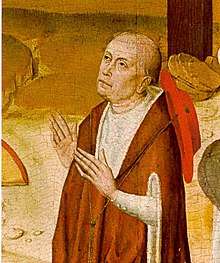
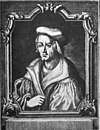
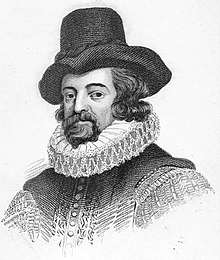
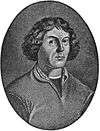
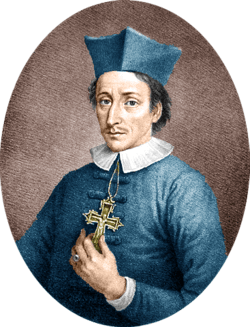

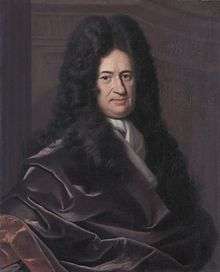
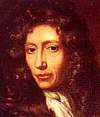
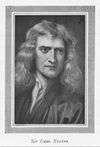
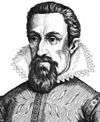

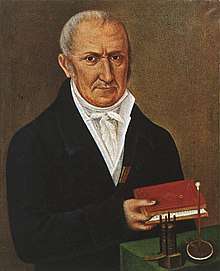
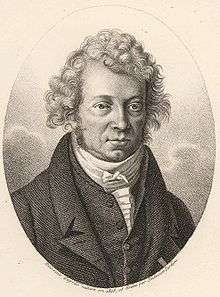
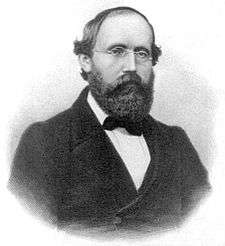
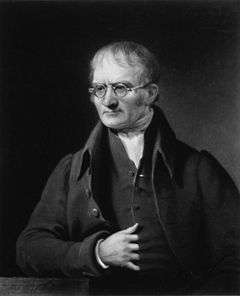
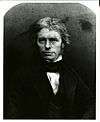
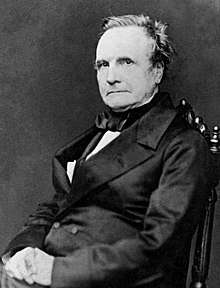
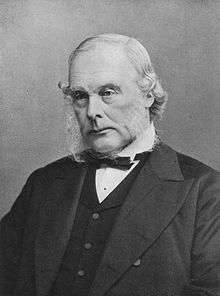

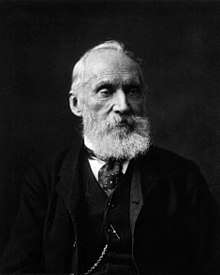
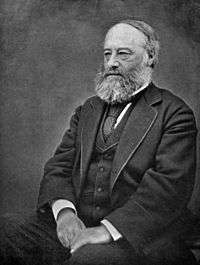
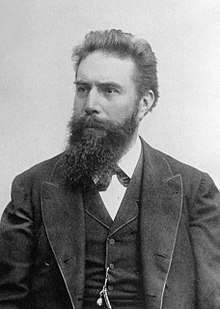
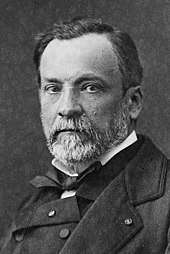

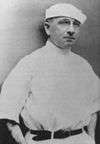
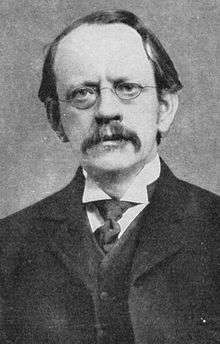
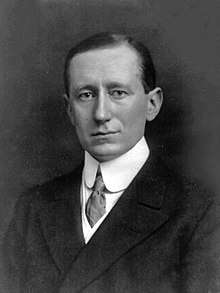
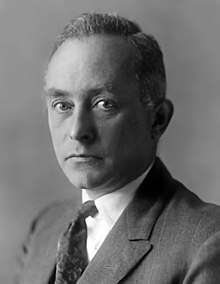
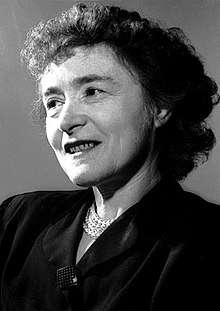

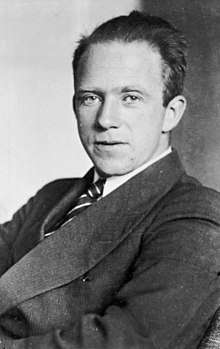
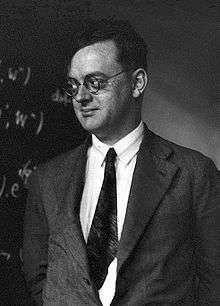

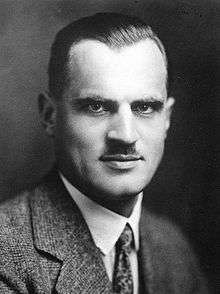

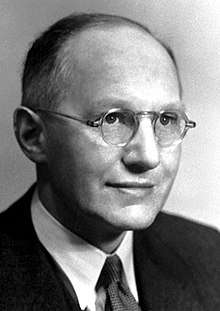
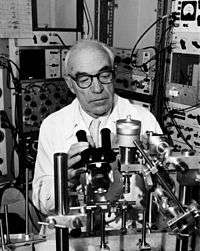
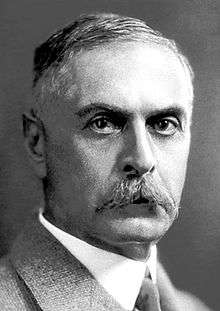
%2C_lecturing_at_Catholic_University%2C_Washington%2C_D.C.%2C_1946.jpg)
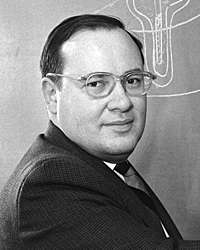
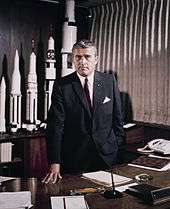
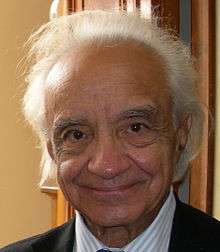
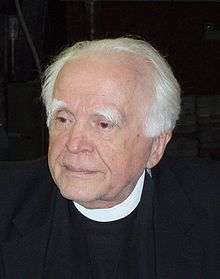
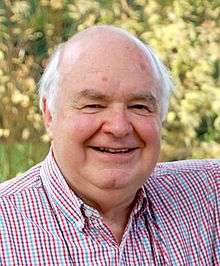
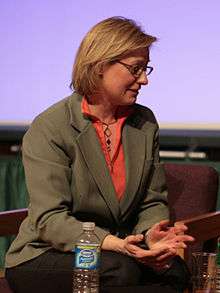
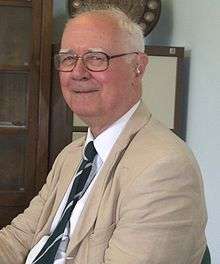

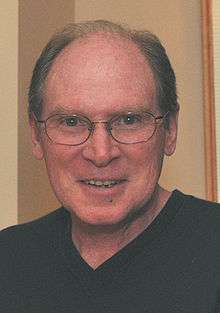
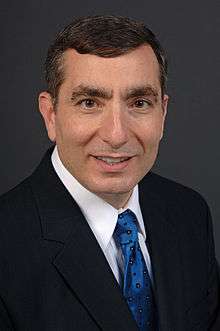
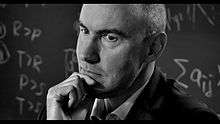
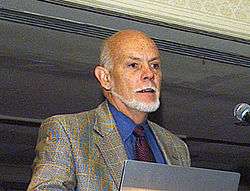
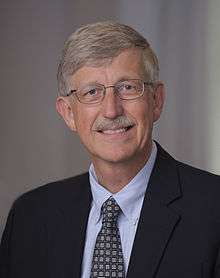
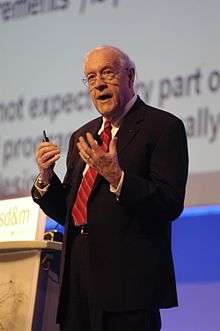
.jpg)


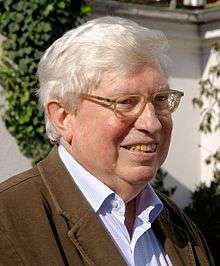
.jpg)
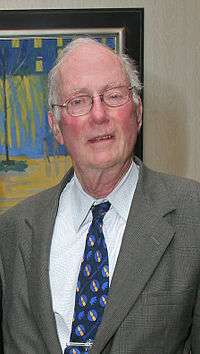
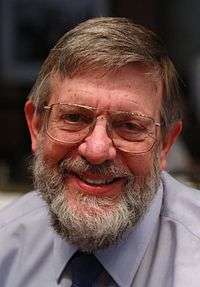
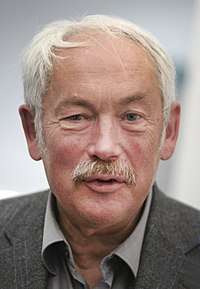
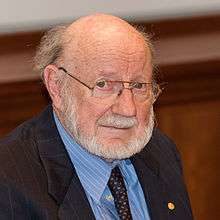
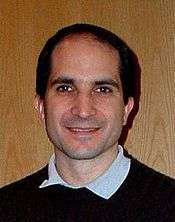
.jpg)